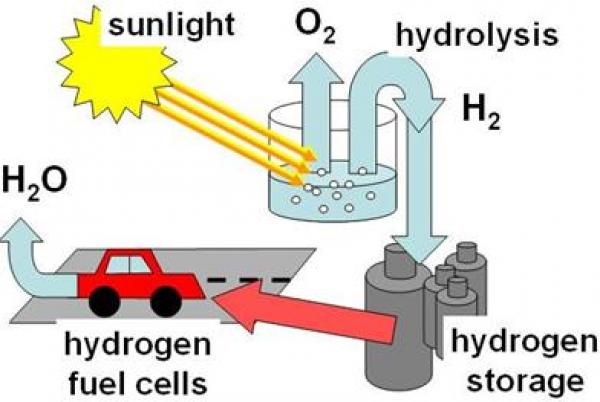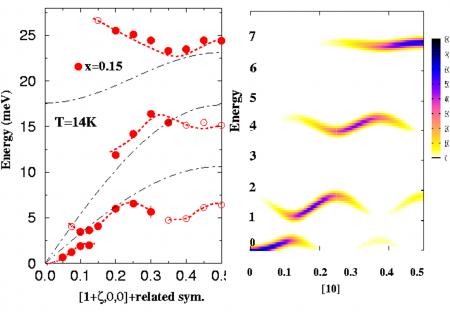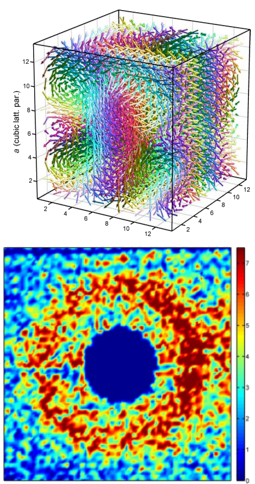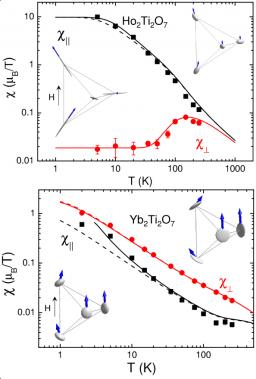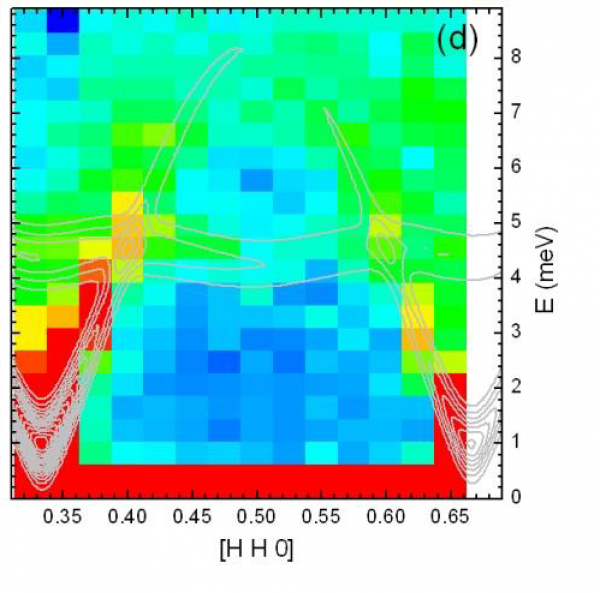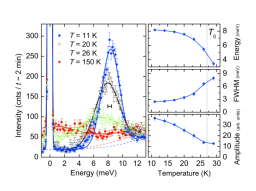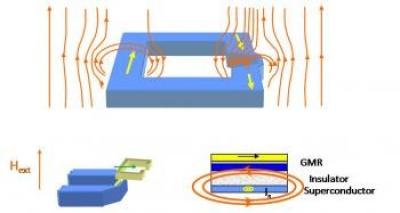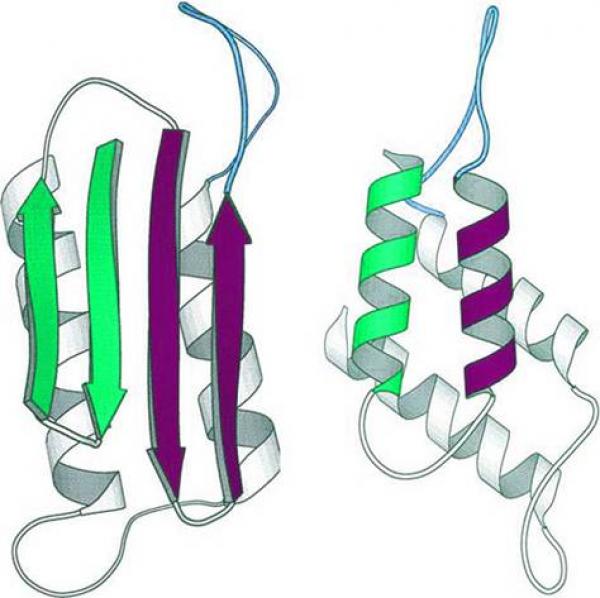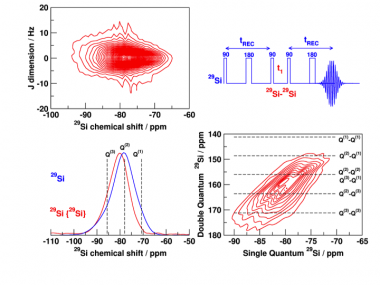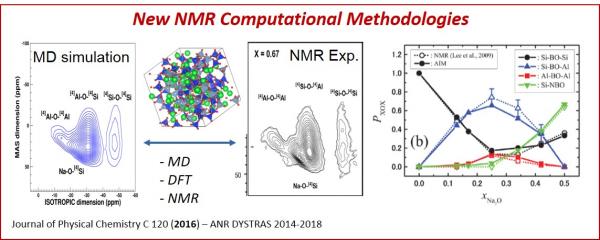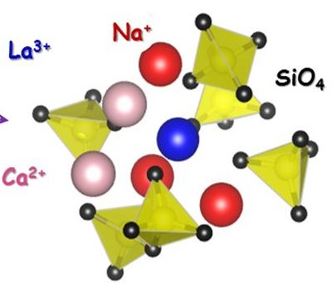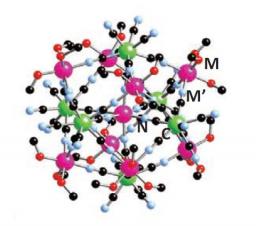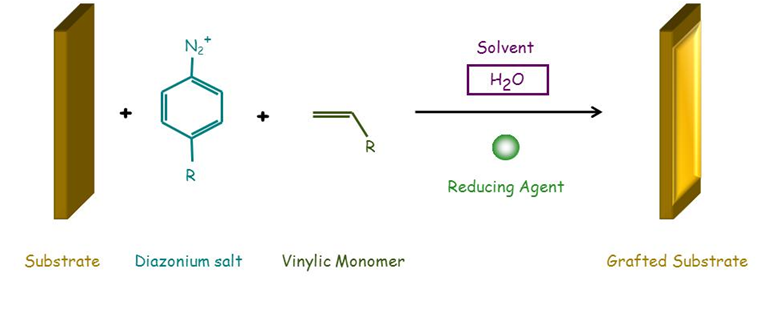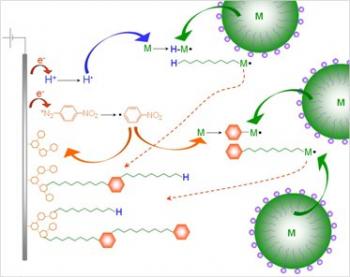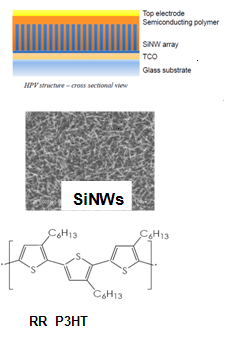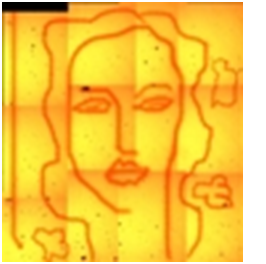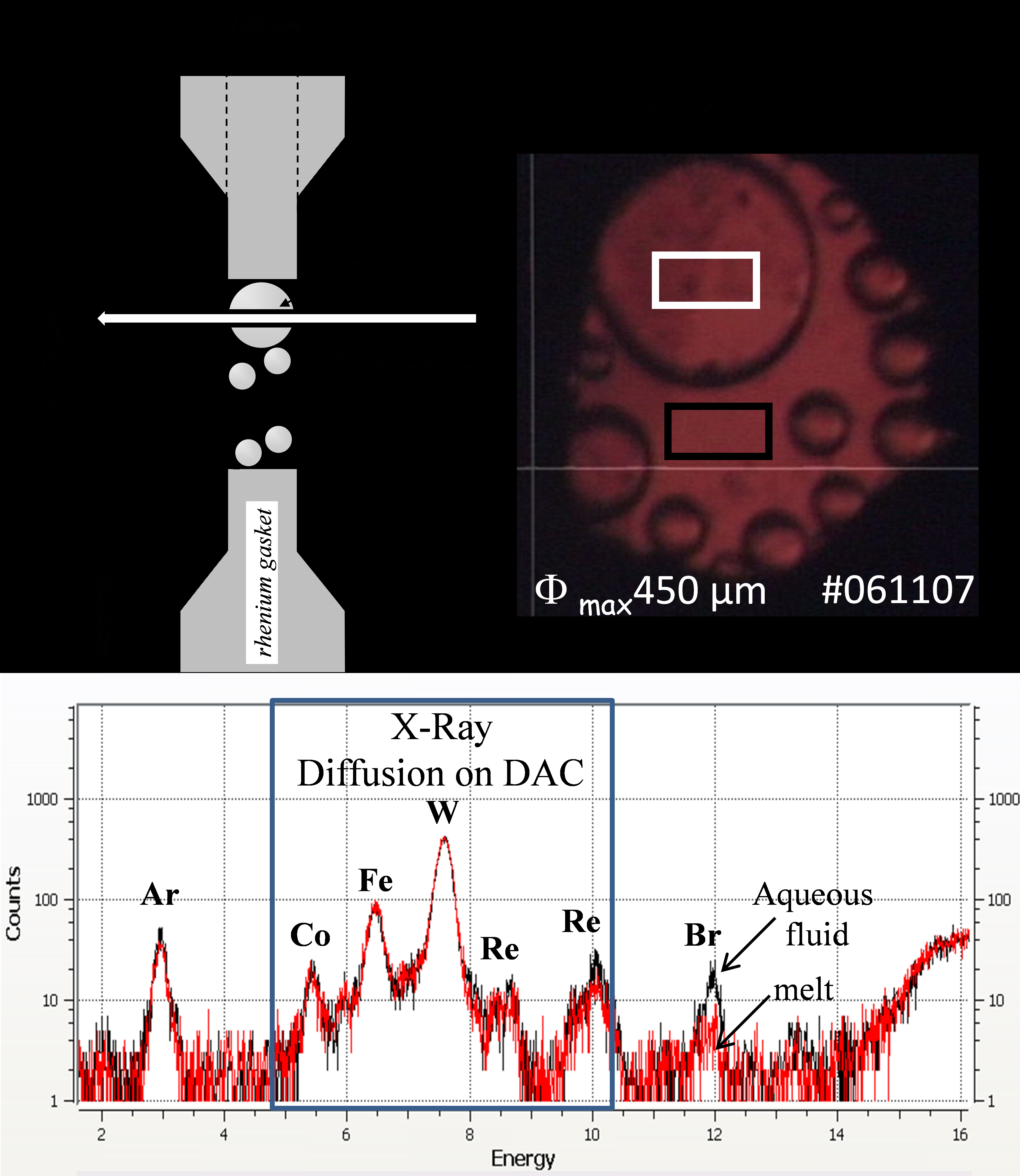Pages scientifiques 2012
2017
- Electrical respons of Pt/Ru/PbZr0.52Ti0.48O3/Pt capacitor as function of lead precursor excess, I. Gueye, G. Le Rhun, O. Renault, E. Defay, N. Barrett. Applied Physics Letters, 111, 222902 (2017).
- Control of surface potential at polar domain walls in a non-polar oxide, G. F. Nataf, M. Guennou, J. Kreisel, P. Hicher, R. Haumont, O. Aktas, E. K. H. Salje, L. Tortech, C. Mathieu, D. Martinotti, N. Barrett. Accepted in Physical Review Materials, XX, XXX (2017).
- Raman signatures of ferroic domain walls captured by principal component analysis, G. F. Nataf, N. Barrett, J. Kreizel, M. Guennou. Accepted in Journal of Physics: Condensed Matters, XXX, XXX (2017).
- Room temperature 2D electron gas at the (001)-SrTiO3 surface, S. Gonzalez, C. Mathieu, O. Copie, V. Feyer, C. M. Schneider, N. Barrett. Applied Physic Letters, 111, 181601 (2017).
- Adsorbate Screening of Surface Charge of Microscopic Ferroelectric Domains in Sol−Gel PbZr0.2Ti0.8O3 Thin Films, O. Copie, N. Chevalier, G. Le Rhun, C. L. Rountree, D. Martinotti, S. Gonzalez, C. Mathieu, O. Renault, N. Barrett. ACS Applied Materials & Interfaces, 9, 29311 (2017).
- Forming mechanism of Te-based conductive-bridge memories, M. Kazar Mendez, E. Martinez, A. Marty, M. Veillerot, Y. Yamashita, R. Gassilloud, M. Bernard, O. Renault, N. Barrett. Accepted in Applied Surface Science, XX, XXX (2017).
- Operando hard X-ray photoelectron spectroscopy study of the Pt/Ru/PbZr0.52Ti0.48O3 interface, I. Gueye, G. Le Rhun, O. Renault, D. Cooper, D. Ceolin, J. P. Rueff, N. Barrett. Applied Physics Letters, 111, 032906 (2017).
- Laboratory based X-ray photoemission core-level spectromicroscopy of resistive oxide memories, D. M. Gottlob, E. Martinez, C. Mathieu, C. Lubin, N. Chevalier, M. Kazar Mendes, C. Charpin, E. Jalaguier, O. Renault, N. Barrett. Ultramicroscopy, 183, 94 (2017).
2016
- Chemistry of surface nanostructures in lead precursor-rich PbZr0.52Ti0.48O3 sol-gel films, I. Gueye, G. Le Rhun, P. Gergaud, O. Renault, E. Defay, N. Barrett. Applied Surface Science, 363, 21 (2016).
- Evolution of defect signatures at ferroelectric domain walls in Mg-doped LiNbO3, G. F. Nataf, M. Guennou, A. Haussmann, N. Barrett, J. Kreisel. Phys. status solidi - Rapid Res. Lett., 10, 222 - 226 (2016).
- Laterally inhomogeneous Au intercalation in epitaxial graphene on SiC(0001): a multimethod electron microscopy study, C. Mathieu, T. O. Mentes, E. Pallecchi, A. Locatelli; G. Patriarche, R. Belkhou, A. Ouerghi. Intech. Edited by Pramoda Kumar Nayak, Chapter 6, p.135 Published october 12, 2016.
ISBN: 978-953-51-2639-3. - Low energy electron imaging of domains and domain walls in magnesium-doped lithium niobate, G. F. Nataf, P. Grysan, M. Guennou, J. Kreisel, D. Martinotti, C. L. Rountree, C. Mathieu, N. Barrett. Scientific Reports, 6, 33098 (2016)
- Interface-mediated ferroelectric patterning and Mn valency in nano-structured PbTiO3/La0.7Sr0.3MnO3, I. P. Krug, H. Doganay, F. Nickel, D. M. Gottlob, C. M. Schneider, A. Morelli, D. Preziosi, I. Lindfors-Vrejoiu, R. Laskowski and N. Barrett. Journal of Applied Physics, 120, 095304 (2016)
- Bi atoms mobility-driven circular domains at the Bi/InAs(111) interface, M. C. Richter, J.-M. Mariot, M. A. Gafoor, L. Nicolai, O. Heckmann, U. Djukic, W. Ndiaye, I. Vobornik, J. Fujii, N. Barrett, V. Feyer, C. M. Schneider, K. Hricovini. Surface Science, 651, 147 (2016)
- Operando X-ray photoelectron emission microscopy for studying forward and reverse biased silicon p-n junctions, N. Barrett, D. M. Gottlob, C. Mathieu, C. Lubin and J. Passicousset, O. Renault and E. Martinez. Review of Scientific Instruments, 87, 053703 (2016)
- Evolution of defect signatures at ferroelectric domain walls in Mg-doped LiNbO3, G. Nataf, M. Guennou, A. Haussmann, N. Barrett, J. Kreisel. Physica Status Solidi (Rapid Research Letters), 10, 222 (2016)
2015
- Influence of hole depletion and depolarizing field on the BaTiO3/La0.6Sr0.4MnO3 interface electronic structure revealed by photoelectron spectroscopy and first-principles calculations, D. G. Popescu, N. Barrett, C. Chirila, I. Pasuk and M. A. Husanu. Physical Review B 92, 245442 (2015)
- Chemistry of surface nanostructures in lead precursor-rich PbZr0.52Ti0.48O3 sol-gel films, I. Gueye, G. Le Rhun, P. Gergaud, O. Renault, E. Defay, N. Barrett Applied Surface Science 363, 21 (2015)
- Surface atomic and chemical structure of relaxor Sr0.63Ba0.37Nb2O6(001), J. L. Wang, B. Vilquin, B. Gautier, G. Dezanneau and N. Barrett. Applied Physics Letters 106, 242901 (2015)
- Pattern induced ordering of semiconducting graphene ribbons grown from nitrogen-seeded SiC, F. Wang, G. Liu, S. Rothwell, M.S. Nevius, C. Mathieu, N. Barrett, A. Sala, T.O. Menteş, A. Locatelli, P.I. Cohen, L.C. Feldman, E.H. Conrad Carbon 82, 360 (2015)
2014
- Reversible switching of in-plane polarized ferroelectric domains in BaTiO3(001) with very low energy electrons, J. E. Rault, T. O. Menteş, A. Locatelli, N. Barrett Scientific Reports 4, 6792 (2014)
- Enhancement of photovoltaic efficiency by insertion of a polyoxometalate layer at the anode of an organic solar cell, M. Alaaeddine, Q. Zhu, D. Fichou, G. Izzet, J. E. Rault, N. Barrett, A. Proust, L. Tortech Inorganic Chemistry Frontiers 1, 682 (2014)
- The Bottom-up Growth of Edge Specific Graphene Nanoribbons, M. S. Nevius, F. Wang, C. Mathieu, N. Barrett, A. Sala, T. O. Mentes, A. Locatelli, E. H. Conrad Nano Letters 14, 6080 (2014)
- Surface polarization, rumpling, and domain ordering of strained ultrathin BaTiO3(001) films with in-plane and out-of-plane polarization , J. Dionot, G. Geneste, C. Mathieu, N. Barrett Physical Review B 90, 014107 (2014)
- Exploring interlayer Dirac cone coupling in commensurately rotated few-layer graphene on SiC(000-1), C. Mathieu, E. H. Conrad, F. Wang, J. E. Rault, V. Feyer, C. M. Schneider, O. Renault and N. Barrett, Surface and Interface Analysis 46, 1268 (2014)
- Microscopic work function anisotropy and surface chemistry of 316L stainless steel using photoelectron emission microscopy, N. Barrett, O. Renault, H. Lemaitre, P. Bonnaillie, F. Barcelo, F. Miserque, M. Wang, C. Corbel, Journal of Electron Spectroscopy and Related Phenomena 195, 117 (2014)
- Charge spill-out and work function of few-layer graphene on SiC(0001), O. Renault, A. Pascon, H. Rotella, K. Kaja, C. Mathieu, J. Rault, P. Blaise, T. Poiroux, N. Barrett, L. Fonseca, Journal of Physics D: Applied Physics 47, 295303 (2014)
- Electronic structure of Al- and Ga-doped ZnO films studied by hard X-ray photoelectron spectroscopy, M. Gabás, P. Torelli, N. T. Barrett, M. Sacchi, and J. R. Ramos Barrado, APL Materials 2, 012112 (2014)
- Chemistry and structure of BaTiO3 ultra-thin films grown by different O2 plasma power, J. L. Wang, J. Leroy, G. Niu, G. Saint-Girons, B. Gautier, B. Vilquin, N. Barrett, Chemical Physics Letters 592, 206 (2014)
2013
- Hydrostatic strain enhancement in laterally confined SiGe nanostripes, G. M. Vanacore1, M. Chaigneau, N. Barrett, M. Bollani, F. Boioli, M. Salvalaglio, F. Montalenti, N. Manini, L. Caramella, P. Biagioni, D. Chrastina, G. Isella, O. Renault, M. Zani, R. Sordan, G. Onida, R. Ossikovski, H.-J. Drouhin, and A. Tagliaferri, Physical Review B 88, 115309 (2013)
- Polarization Sensitive Surface Band Structure of Doped BaTiO3(001), J. E. Rault, J. Dionot, C. Mathieu, V. Feyer, C. M. Schneider, G. Geneste, and N. Barrett, Physical Review Letters 111, 127602 (2013)
- Microscopic chemical & electronic structure of few layer graphene on SiC(000-1) C. Mathieu, N. Barrett, PICO, The Omicron Nanoscience Newsletter 17, 6 (2013)
- Full field electron spectromicroscopy applied to ferroelectric materials, N. Barrett, J. E. Rault, J. L. Wang, C. Mathieu, A. Locatelli, T. O. Mentes, M. A. Niño, S. Fusil, M. Bibes, A. Barthélémy, D. Sando, W. Ren, S. Prosandeev, L. Bellaiche, B. Vilquin, A. Petraru, I. P. Krug and C. M. Schneider, Journal of Applied Physics 113, 187217 (2013)
- Laboratory-based real and reciprocal space imaging of the electronic structure of few layer graphene on SiC(000-1) using photoelectron emission microscopy, N Barrett, K Winkler, B Krömker and E H Conrad, Ultramicroscopy, 130, 94 (2013)
- Electrical and physical topography in energy-filtered photoelectron emission microscopy of two-dimensional silicon pn junctions, M. Lavayssière, M. Escher, O. Renault, D. Mariolle and N. Barrett, Journal of Electron Spectroscopy and Related Phenomena 186, 30-38 (2013)
- Interface electronic structure in a metal/ferroelectric heterostructure under applied bias, J. E. Rault, G. Agnus, T. Maroutian, V. Pillard, Ph. Lecoeur, G. Niu, B. Vilquin, M. G. Silly, A. Bendounan, F. Sirotti and N. Barrett, Physical Review B 87, 155146 (2013)
- X-ray photoelectron diffraction study of relaxation and rumpling of ferroelectric domains in BaTiO3(001), A. Pancotti, J. Wang, P. Chen, L.Tortech, C.-M. Teodorescu, E. Frantzeskakis and N. Barrett, Physical Review B 87, 184116 (2013)
2012
- Chemistry and Atomic Distortion at the Surface of an Epitaxial BaTiO3 Thin Film after Dissociative Adsorption of Water, J. L. Wang, F. Gaillard, A. Pancotti, B. Gautier, G. Niu, B Vilquin, V. Pillard, G. L. M. P. Rodrigues and N. Barrett, Journal of Physical Chemistry C 116, 21802-21809 (2012)
- Polarization dependent chemistry of ferroelectric BaTiO3(001) domains, Y. Mi, G. Geneste, J. E Rault, C. Mathieu, A. Pancotti and N. Barrett, Journal of physics: Condensed matter 24, 275901 (2012)
- Screening of ferroelectric domains on BaTiO3(001) surface by ultraviolet photo-induced charge and dissociative water adsorption, J. L. Wang, B. Vilquin and N. Barrett, Applied Physics Letters 101, 092902 (2012)
- Dark field photoelectron emission microscopy of micron scale few layer graphene, N. Barrett, E. Conrad, K. Winkler and B. Krömker, The Review of Scientific Instruments 83, 083706 (2012)
- Thickness-Dependent Polarization of Strained BiFeO3 Films with Constant Tetragonality, J. Rault, W. Ren, S. Prosandeev, S. Lisenkov, D. Sando, S. Fusil, M. Bibes, A. Barthélémy, L. Bellaiche and N. Barrett, Physical Review Letters 109, 267601 (2012)
- Expanding the view into complex material systems: From micro-ARPES to nanoscale HAXPES, C. M. Schneider, C. Wiemann, M. Patt, V. Feyer, L. Plucinski, I.P. Krug, M. Escher, N. Weber, M. Merkel, O. Renault and N. Barrett, Journal of Electron Spectroscopy and Related Phenomena 185, 330-339 (2012)
2011
- Recent Advances In 2D-Band Structure Imaging By k-PEEM and Prospects For Technological Materials, AIP Conference Proceedings 95, 95-99 (2011)
- Microscopic correlation between chemical and electronic states in epitaxial graphene on SiC(000-1), C. Mathieu, N. Barrett, J. Rault, Y. Mi, B. Zhang, W. A. de Heer, C. Berger, E. Conrad and O. Renault, Physical Review B 83, 235436 (2011)
- Ferroelectricity in a quasiamorphous ultrathin BaTiO3 film, J. Wang, A. Pancotti, P. Jégou, G. Niu, B. Gautier, Y. Mi, L. Tortech, S. Yin, B. Vilquin and N. Barrett, Physical Review B 84, 205426 (2011)
- Skin Layer of BiFeO3 Single Crystals, X. Martí, P. Ferrer, J. Herrero-Albillos, J. Narvaez, V. Holy, N. Barrett, M. Alexe and G. Catalan, Physical Review Letters 106, 1-4 (2011)
- Direct observation of Al-doping-induced electronic states in the valence band and band gap of ZnO films, M. Gabás, P. Torelli, N. Barrett, M. Sacchi, F. Bruneval, Y. Cui, L. Simonelli, P. Díaz-Carrasco and J. Ramos Barrado, Physical Review B 84, 1-4 (2011)
- Impact of the TiN electrode deposition on the HfO2 band gap for advanced MOSFET gate stacks, C. Gaumer, E. Martinez, S. Lhostis, M.-J. Guittet, M. Gros-Jean, J.-P. Barnes, C. Licitra, N. Rochat, N. Barrett, F. Bertin and A. Chabli, Microelectronic Engineering 88, 72-75 (2011)
- Photoemission induced bias in two-dimensional silicon pn junctions, M. Lavayssière, O. Renault, D. Mariolle, M. Veillerot, J. P. Barnes, J. M. Hartmann, J. Leroy and N. Barrett, Applied Physics Letters 99, 202107 (2011)
2010
- Applications of high lateral and energy resolution imaging XPS with a double hemispherical analyser based spectromicroscope, M. Escher, K. Winkler, O. Renault and N. Barrett, Journal of Electron Spectroscopy and Related Phenomena 178-179, 303-316 (2010)
- Surface enhanced covalency and Madelung potentials in Nb doped SrTiO3 (100), (110) and (111) single crystals, G. M. Vanacore, L. F. Zagonel and N. Barrett, Surface Science 604, 1674-1683 (2010)
- Influence of the ferroelectric polarization on the electronic structure of BaTiO3 thin films, N. Barrett, J. Rault, I. Krug, B. Vilquin, G. Niu, B. Gautier, D. Albertini, P. Lecoeur and O. Renault, Surface And Interface Analysis 42, 1690-1694 (2010)
- Extrinsic screening of ferroelectric domains in Pb(Zr0.48Ti0.52)O3, I. Krug, N. Barrett, A. Petraru, A. Locatelli, T. O. Mentes, M. A. Niño, K. Rahmanizadeh, G. Bihlmayer and C. M. Schneider, Applied Physics Letters 97, 222903 (2010)
- Full field chemical imaging of buried native sub-oxide layers on doped silicon patterns, F. de la Peña, N. Barrett, L. F. Zagonel, M. Walls and O. Renault, Surface Science 604, 1628-1636 (2010)
2009
- Aspects of lateral resolution in energy-filtered core level photoelectron emission microscopy, A. Bailly, O. Renault, N. Barrett, T. Desrues, D. Mariolle, L. F. Zagonel and M. Escher, Journal of physics: Condensed matter 21, 314002 (2009)
- Orientation-dependent work function of in situ annealed strontium titanate, L. F. Zagonel, M. Bäurer, A. Bailly, O. Renault, M. Hoffmann, S.-J. Shih, D. Cockayne and N. Barrett, Journal of physics: Condensed matter 21, 314013 (2009)
- X-ray photoelectron spectroscopy and ultraviolet photoelectron spectroscopy investigation of Al-related dipole at the HfO2/Si interface, L. Q. Zhu, N. Barrett, P. Jégou, F. Martin, C. Leroux, E. Martinez, H. Grampeix, O. Renault and A. Chabli, Journal of Applied Physics 105, 024102 (2009)
- Spatially resolved, energy-filtered imaging of core level and valence band photoemission of highly p and n doped silicon patterns, N. Barrett, L. F. Zagonel, O. Renault and A. Bailly, Journal of physics: Condensed matter 21, 314015 (2009)
- Core level photoelectron spectromicroscopy with Al Kα1 excitation at 500nm spatial resolution, O. Renault, M. Lavayssière, A. Bailly, D. Mariolle and N. Barrett, Journal of Electron Spectroscopy and Related Phenomena 171, 68-71 (2009)
- La spectromicroscopie XPEEM avec le rayonnement synchrotron, N. Barrett and O. Renault, Matériaux et Techniques 97, 101-122 (2009)
- Chemical and electronic interface structure of spray pyrolysis deposited undoped and Al-doped ZnO thin films on a commercial Cz-Si solar cell substrate, M. Gabás, N. T. Barrett, J. R. Ramos-Barrado, S. Gota, T. C. Rojas and M.C. L'opez-Escalante, Solar Energy Materials and Solar Cells 93, 1356-1365 (2009)
2008
- Orientation-dependent surface composition of in situ annealed strontium titanate, Luiz F. Zagonel, Nicholas Barrett, Olivier Renault, Aude Bailly, Michael Bäurer, Michael Hoffmann, Shao-Ju Shih and David Cockayne, Surface and Interface Analysis 40, 1709-1712 (2008)
Stages Master 1 / Master 2
Imaging of charged ferroelectric domain walls for high density storage media
Downscaling of memory devices for ultra-high storage densities and low power consumption is a major challenge for post-CMOS electronics in order to implement new functionalities. Domain wall (DW) engineering in ferroic materials is one possible route where the DW rather than the bulk material becomes the active element. The challenge then is to predict and control the nanoscale DW functionality.
Charged domain walls (CDWs) in ferroelectric (FE) materials appear as a true, new paradigm for post-CMOS electronics precisely because they can be understood as nanometric mobile metallic conductors separated by highly insulating dielectric regions. They support currents nine orders of magnitude greater than in the intervening insulating domains. However, their high electrostatic energy makes them instable and a specific preparation method is necessary.
For more information:
 Internship_Walls_CEA_2018.pdf
Internship_Walls_CEA_2018.pdf
X-ray photoelectron diffraction study of structural phases in epitaxially strained ferroelectric thin films
A fundamental property of ferroelectric (FE) materials is their electrically switchable spontaneous polarization below the Curie temperature, which has driven promising applications of such materials as nonvolatile memory storage devices and sensors. Structural changes in thin films can modify the ferroelectric state and thus the performance of these materials in nanoelectronic devices, chemical sensors or photovoltaic cells. The polarization state may be chemically switched by annealing under oxygen and epitaxial strain can engineer completely new FE phases.
X-ray Photoelectron Diffraction (XPD) combines the chemical sensitivity of core level photoemission with local order sensitivity around the emitting atom. The photoemission intensity is measured as a function of angle above the sample, giving information on interatomic distances, bond angles and chemical states. It is therefore ideally suited to measure the surface distortions in the atomic structure of epitaxial FE films. IRAMIS has recently installed a new, high angular resolution XPD experiment with fully automatic data acquisition system.
For more information:
 Sujet_XPD_CEA_an.pdf
Sujet_XPD_CEA_an.pdf
The transformation of solar energy into chemical energy stored in the form of hydrogen, through photoelectrochemical water splitting is a promising method with the important advantage of being environment friendly and free from carbon dioxide emission. Several metal oxide semiconductors are able to split water into hydrogen and oxygen but the efficiencies are still low. Several strategies were proposed to improve the photoelectrochemical properties like doping or nanostucturing, but the origin of the improvement is not well understood yet. In the laboratory, we study the photo-electrochemical activity of thin epitaxial oxide films in order to understand the influence of different parameters on the photoanode efficiency.
Molecular magnetism is a relatively new field of research, which has attracted growing interest among physicists since the discovery, fifteen years ago, of the first “single molecule magnet” (SMM), Mn12-acetate, which behaves as a magnet at the molecular scale below a blocking temperature of 3 K. The present challenges in this field consist in understanding how to control magnetic anisotropy in order to obtain SMM behavior at higher temperatures, and in designing new multifunctional materials possessing other functional properties in addition to magnetism, e.g. magnetic photoswitchable compounds. Optical magnetic switching in the solid state raises questions of fundamental interest as to the mechanisms governing phase separation into magnetic domains or continuous structural changes during photoexcitation.
Combined analysis of charge and spin densities in molecular magnets
The goal of the CEDA project, supported by the ANR (2008-2010), on the Convergence of Electron spin, charge and momentum Densities Analysis, is to combine data obtained by different techniques on the electron density in order to refine a unique model, thereby allowing the electronic structure of magnetic molecular compounds to be more accurately described. This work involves theoreticians (SPMS, ECP), x-ray (CRM2, Nancy) and neutron (LLB) diffraction specialists, and chemists (LMI, Lyon). The first step devoted to the joint refinement of charge and spin densities from x-ray and polarized neutron diffraction data sets has been completed. In this approach, the multipole mode l[1] is used to describe the densities of spin up and spin down electrons, the sum (or difference) of which is the charge (spin) density. The software called Mollynx was developed by splitting the electron density model into two spin components. Experimental data were collected by x‑ray diffraction at CRM2, and polarized neutron diffraction on 5C1 at LLB on two cubane-like [M4O4] complexes (M = CuII, NiII), synthesized in Lyon (LMI) (Figure 1, top). The joint refinement of these data is expected to ensure a better characterization of the metal-ligand bonds and a more complete understanding of their role in the intramolecular magnetic interactions and the magnetic anisotropy. The first analysis of the PND data alone [2] shows that the experimental spin distribution in the Cu4 complex is mainly located in the basal planes of the CuII ions and visualizes the magnetic interaction pathways via the bridging oxygen atoms (Figure 1, bottom).
[1] N.K. Hansen and P. Coppens Acta. Cryst.A34, 909 (1978) .
[2] Structure, Magnetic Properties, Polarized Neutron Diffraction and Theoretical Study of a copper(II) cubane
C. Aronica, Y. Chumakov, E. Jeanneau, D. Luneau, P. Neugebauer, A.-L. Barra, B. Gillon, A. Goujon, A. Cousson, J. Tercero, E. Ruiz, Chem. Eur. J. 14, 9540 (2008).
|
Among the many novel phenomena encountered in strongly-correlated electron systems, specific effects originating from the interplay of different degrees of freedom (lattice, electron charge, spin and orbital angular momentum) have aroused particular interest. One prominent example is the manganites, which are well known for their colossal magnetoresistance (CMR) properties, associated with a phase transition from a high-temperature insulating phase to a low-temperature metallic phase [1]. |
|
Blue phases often appear in chiral liquid crystals as arrangements of so-called “double-twist cylinders”, characterized by twisting in all directions perpendicular to the cylinder axis [1]. Magnetic moments in chiral magnets tend to form spirals, and one can thus speculate on the existence of magnetic “blue phases”. By combining model calculations with experiments, we show that such a phase does form in MnSi over a large part of the phase diagram, including at ambient pressure [2]. |
In chiral magnets, calculations performed in the large-pitch limit show that spirals with a well-defined twist direction (helical order) should have a lower energy in magnets, and that blue phases cannot appear.39 Despite this result, a blue phase has been suspected to occur in the itinerant chiral magnet MnSi at high hydrostatic pressure, where a so-called partial magnetic order has been observed [3].
In collaboration with A. Hamman, T. Wolf, and H. v. Löhneysen (Karlsruhe Institute of Technology) and D. Reznik (University of Colorado), we have performed calculations starting from magnetic moments of the same fixed magnitude, with random orientations, and placed on simple cubic or B20 lattices. The orientation of each moment was optimized sequentially in random order until the total energy of the system stabilized.
A typical spin arrangement obtained by this method is shown in Figure 1 (top). The topology is the same as for blue phases of chiral liquid crystals, i.e., with moments twisting away from cylindrical axes. We tested our model via experiments on the 4F cold triple-axis neutron spectrometer and on the Papyrus small angle neutron scattering (SANS) diffractometer. The magnetic correlation length is expected to be reduced by Fe-doping similarly to thermal fluctuations.
According to our model, Fe doping should allow the blue phase to persist to lower temperatures. Experiments show that this is indeed the case: Tc decreases with Fe doping [4] and the SANS spectrum of Mn0.8Fe0.15Si at 1.5 K is a ring characteristic of the blue phase (Figure 1, bottom). The same result was obtained for Fe1-xCoxSi [5], pointing to a universality of this phenomenon.
Our results provide a blueprint for understanding cubic chiral magnets, including MnSi, by showing that the frustrated nature of the magnetic interactions naturally and generically induces complex spin arrangements, which had so far been found only in liquid-crystal blue phases. Controlling special properties of this blue phase with impurities in thin films has a potential for new applications, particularly in electronics and magnetic memory devices [6].
Références :
[1] D.C. Wright and N.D. Mermin, Rev. Mod. Phys. 61, 385 (1989)
[2] Magnetic blue phase in itinerant magnet MnSi
A. Hamann, D. Lamago, H.v. Löhneysen, D. Reznik, (submitted to Nature Materials).
[3] C. Pfleiderer et al., Nature 427, 227 (2004).
[4] N. Manyala et al., Nature 404, 581 (2000).
[5] S.V. Grigoriev et al., Phys. Rev. Lett. 102, 037204 (2009).
[6] X.Z. Yu et al., Nature 465, 901 (2010).
In chemically ordered compounds with short-range magnetic interactions, geometrical frustration appears when all interactions cannot be satisfied simultaneously due to the lattice geometry. A well-known example is a triangle of antiferromagnetically coupled spins. This frustration results in a strong degeneracy of the ground state, since many configurations have the same energy. It now appears as a powerful ingredient for designing materials or tuning physical properties, since frustrated magnetic states may be easily switched by small changes in the energy balance. Pyrochlores R2Ti2O7 (where R3+ is a rare earth ion) are model systems showing exotic short-range magnetic orders called “spin liquids” and “spin ices”, with unconventional excitations akin to magnetic monopoles, and a huge sensitivity to perturbations. Various aspects have been studied in collaborations with P. Bonville and A. Forget (IRAMIS/SPEC, Saclay), G. Dhalenne and C. Decorse (ICMMO, Orsay), and H. Mutka (ILL, Grenoble).
Local susceptibility in R2Ti2O7 pyrochlores (R = Tb, Ho, Yb, Er)
Rare earth titanate pyrochlores of Fd-3m space group, where the R3+ ions occupy the summits of corner-sharing tetrahedra and the Ti4+ ions are nonmagnetic, show very different ground states, such as spin-liquid (Tb) and spin-ice (Ho) states, short range orders, planar antiferromagnetism (Er), and 2D ferromagnetism (Yb). Their physics is governed by the exchange and dipolar interactions between the R3+ ions, together with the crystal-field anisotropy along the <111> axes. The study of the paramagnetic state under applied fields points to precursor effects of these ground states. Single-crystal polarized neutron diffraction gives access to the local susceptibility tensor in the Gukasov-Brown model [1], which reduces to 2 components χ// and χ⊥ with respect to the <111> local axis, owing to the high symmetry the R3+ site. This allows one to describe the complex field-induced structures using only two parameters. This tensor cannot be derived from the bulk magnetization due to the equivalent <111> axes. Measurements performed in four typical cases where the R-R interactions may be F or AF, and the crystal-field anisotropy either Ising- or XY-type, showed that the local susceptibility is highly anisotropic (Figure 1). This is the first determination of the local susceptibility in the Ho2Ti2O7 spin ice with (F, Ising) behavior. Comparison with a calculation of the non-interacting susceptibility deduced from the crystal-field scheme (measured independently by inelastic neutron scattering) yields the tensor of exchange interactions, which is also found to be anisotropic [2]. As a surprising consequence, in Yb2Ti2O7 with (F, XY) behavior, crystal-field and exchange anisotropies nearly compensate, yielding a Curie susceptibility and ground state fluctuations in an original “exchange spin-ice” ground state [3].
[1] Determination of atomic site susceptibility tensors from polarized neutron diffraction data, A. Gukasov and J. Brown, J. Phys. Condens. Matter 14, 8831, (2002).
[2] Ising versus XY Anisotropy in Frustrated R2Ti2O7 Compounds as “Seen” by Polarized Neutrons, H. Cao, A. Gukasov, I. Mirebeau, P. Bonville, C. Decorse, G. Dhalenne, Physical Review Letters 103, 056402 (2009).
[3] Anisotropic exchange in frustrated pyrochlore Yb2Ti2O7
H. Cao, A. Gukasov, I. Mirebeau, P. Bonville, J. Phys. Cond. Mat. Fast Track, 21, 492202 (2009).
Studies conducted over the past few decades came to the conclusion that ferroelectricity and magnetism tend to be mutually exclusive, and interact only weakly with each other when they do coexist. The recent discovery of multiferroic materials, in which ferroelectricity and magnetism are intimately coupled, has completely changed these established views, opened routes to new technological applications, and has forced physicists to reconsider some long-accepted ideas [1].
Coupling between magnetic and electric orders makes it possible to design promising devices, such as high-speed memories with magnetically and electrically addressable states, magnetically tunable tunnel-junctions, sensors, filters, transducers, etc. For instance, the control of magnetization by an applied electric field via the magnetoelectric coupling offers an opportunity to combine the respective advantages of FeRAMs (ferroelectric random access memories) and MRAMs (magnetic random access memories) in the form of non-volatile magnetic storage bits, which can be switched by an electrical field and thus combine the merits of MRAMs in terms of access time and endurance with a low writing energy [2].
Meanwhile, a major effort is currently underway to revisit the ferroelectric-ferromagnetic dichotomy and to understand the multiferroic properties on fundamental grounds. The multiferroic compounds are scarce, as symmetry considerations impose severe constraints. Indeed, their space group should be non-centrosymmetric, to accommodate ferroelectricity, but also compatible with a magnetic ground state. Last but not least, all multiferroic materials found to date exhibit a certain amount of magnetic frustration. This, together with a strong spin- lattice coupling, seems to be a basic physical ingredient for multiferroicity. For example, the orthorhombic RMnO3 compounds, where R is a rare-earth element (R = Eu, Gd, Tb, Dy), are archetypes of multiferroic materials. Magnetic frustration arises from competing magnetic exchange interactions, yielding an incommensurable spiral magnetique structure. As proposed in the “spin-current” model, the spin-lattice coupling is a result of the Dzyaloshinskii-Moriya interaction: minimizing the corresponding term in the Hamiltonian of the system results in a relaxation of atomic positions and, in turn, in an electric polarization [3].
[1] Multiferroics: a magnetic twist for ferroelectricity
S-W Cheong and Maxim Mostovoy, Nature Materials 6, (2007) 13.
[2] Giant tunnel electroresistance for non-destructive readout of ferroelectric states
V. Garcia, S. Fusil, K. Bouzehouane, S. Enouz-Vedrenne, N. D. Mathur, A. Barthélémy & M. Bibes, Nature Materials 460, 81 (2009).
[3] Dynamical magnetoelectric coupling in helical magnets
Hosho Katsura, Alexander V. Balatsky, and Naoto Nagaosa, Phys. Rev. Lett. 98 (2007) 027203
4f electrons are known to be more localized than d electrons and subject to strong spin-orbit coupling. Instabilities of otherwise magnetic 4f states occur mainly in metallic compounds as a result of hybridization with conduction band states, as described in the well-known Anderson model. This approach basically describes a competition between exchange interactions and Kondo-type magnetic fluctuations, producing renormalized Fermi-liquid quasiparticle states, heavy effective masses and, in some cases, “heavy-fermion superconductivity”. Some materials do not fit into this framework, however, because other degrees of freedom (such as the multipole moments) are involved, or because the renormalization leads to a semiconducting ground state (“Kondo insulators”).
Unconventional ordered states: competing dipole and multipole interactions
Whereas neutron diffraction techniques remain unchallenged in solving intricate magnetic structures, systems in which spin and orbital degrees of freedom are intimately coupled require more diversified approaches. This type of situation occurs in f-electrons exhibiting various types of “multipole orders” at low temperature, such as skutterudites or hexaborides. The best-known example is CeB6, which shows a mixed order of Ce quadrupole and octupole moments in a narrow temperature range (“phase II”: 2.3 < T < 3.2 K in zero field), prior to developing a long-range order of magnetic dipole moments. A field-induced (H || [001]) magnetic contribution ascribed to the ordered Txyz octupole moments was observed for the first time in neutron diffraction experiments performed at LLB (collaboration with Tohoku University, Sendai and JAEA, Tokai). Substituting Ce by other lanthanide elements with different ground state multiplets (2S+1LJ = 1S0, 2F5/2, 3H4, 4I9/2 for La, Ce, Pr, and Nd, respectively), one can selectively tune the different multipole moments and study the effect on the ordering properties of the material. Studies of the (Ce,Pr)B6, (Ce,Nd)B6, and (La,Pr)B6 series, carried out in a collaboration between the LLB (neutron diffraction), Hiroshima University (bulk properties), and Spring-8 (synchrotron x-ray diffraction), led to the characterization of several new ordered phases in the temperature–magnetic field phase diagrams for different
compositions, whose relative stability ranges can be traced back to the interplay between multipole interactions of different orders and symmetries [1],[2].
Recently a new material, CeRu2Al10, became the focus of considerable attention: despite being a seemingly innocuous intermetallic Ce compound, it appears to be on the verge of a semiconducting state, which can be stabilized under a moderate pressure of ~ 1 GPa, but subsequently collapses above 3 GPa. This dramatic effect is directly connected to an elusive phase transition occurring at T0 = 27 K, whose order parameter remains controversial. Superstructure satellites were observed in a powder diffraction experiment on G4-1 [3], and proven to be magnetic (wave vector kAF = [1,0,0]) using neutron polarization analysis on 4F1. However, the simplest antiferromagnetic structure suggested by the neutron measurements fails to explain the recent results from Al NMR. Furthermore, INS data performed on powder (Figure 1.2) indicate that the main peak developing at about 8 meV below T0 has a mixed (magnetic + nuclear) character. This suggests that the transition does not reduce to a conventional antiferromagnetic ordering, and more detailed investigations have been undertaken to clarify this important question.
[1] Magnetic order and multipole interactions in CexPr1−xB6 solid solutions
J.-M. Mignot, G. André, J. Robert, M. Sera, and F. Iga, Phys. Rev. B 78, 014415 (2008)
[2] Effect of Nd substitution on the magnetic order in CexNd1−xB6 solid solutions
J.-M. Mignot, J. Robert, G. André, M. Sera, F. Iga, Phys. Rev. B 79, 224426 (2009)
[3] Long-range order and low-energy magnetic excitations in CeRu2Al10 studied via neutron scattering
J. Robert, J.-M. Mignot, G. André, T. Nishioka, R. Kobayashi, M. Matsumura, H. Tanida, D. Tanaka, M. Sera, Phys. Rev. B, Rapid Commun. 82, 100404R (2010).
Measurements of very weak field (down to the femtotesla range) have been mainly addressed by low-Tc SQUIDS. We have proposed in 2004 the principle of a new sensor, based on spin-electronics, to offer extremely good sensitivity for measurements of magnetic fields over a wide range of frequency (dc to hundreds of MHz).
These sensors, called mixed sensors, are based on the association of a sensitive field sensor (Giant Magnetoresistance or Tunnel Magnetoresistance) and of an efficient flux-to-field transformer. The transformer is a cm size superconducting loop containg a micron size constriction. When an external field is applied perpendicular to the loop, a supercurrent is generated, to prevent the entrance of the field in the loop. This supercurrent reaches a very high density when passing through the constriction. The stray field lines due to this current can be locally hundreds to thousands times larger than the applied field. If one locates a GMR or TMR element on top or below the constriction, it will collect this locally enhanced field lines and a change in the resistance of the GMR (TMR) element can be measured (see Figure 1).
This device is fully made out of thin film technology, and can be either using a low-Tc (typically Nb) loop or a High-Tc (YBaCuO) loop. In the first case, liquid helium cooling is required whereas in the second one only nitrogen cooling is necessary.
L’immense complexité du vivant a pu faire croire que les méthodes de la physique ne pouvaient être utiles pour le comprendre. Avec le recul, il est apparu que cette difficulté était due au fait que les systèmes biologiques évoluent dans un univers impliquant un très grand nombre d’états d’énergies voisines et séparés par des barrières peu élevées : une faible contrainte imposée peut entrainer un déplacement considérables des équilibres.
Un problème typique est le repliement des protéines. Le paradoxe de Levinthal résulte simplement du dénombrement des configurations géométriques possibles d’une protéine moyenne, de l’ordre de 10 ^ 143 ! Il est donc impossible qu’elle explore toutes les configurations pour trouver la plus stable. Il est également possible qu’il existe plusieurs états métastables. In vivo, une mauvaise configuration de certaines protéines est considérée comme la cause de pathologies graves (ESB, Creutzfeld-Jacobs, Alzheimer).
Nous avons étudié une facette de ce problème en considérant un système "modèle" i.e. considérablement simplifié : un peptide composé de la répétition d’un seul acide aminé, l’acide polyglutamique. Cet homopeptide est connu pour sa propension à constituer une hélice à basse température et une chaîne aléatoire à température élevée. L’état hélicoïdal peut être facilement quantifié expérimentalement par la technique de dichroïsme circulaire. Cette transition a été modélisée dès 1959 par une théorie mettant en jeu deux paramètres énergétiques, l’énergie d’une boucle élémentaire et l’énergie de couplage entre boucles voisines ainsi que l’entropie des configurations. Ce modèle est formellement analogue au modèle d’Ising à une dimension et donc soluble. Des mesures récentes précises se sont révélées incompatibles avec ce modèle. Nous avons pu montrer que par contre les données étaient bien décrites par la considération d’un troisième état possible et l’absence de coopérativité.
Our researches in Solid State NMR aim at developping new experimental, theoretical and computational approaches for the study of materials. They are conducted along four main directions :
DFT computation of NMR parameters with specific methods for solids, i.e., with periodic boundary conditions, have now become essential in solid-state NMR studies.[1,2] We are developing integrated methodologies based on the combination of molecular dynamics simulations with NMR to help the detailed interpretation of experimental data for glasses.[3] We applied them to aluminosilicate glasses to improve our understanding of the local structural features controlling the NMR parameters of nuclei like 27Al, 29Si, 23Na, 43Ca[4-6] or rare-earth elements such as Y+++ and Sc+++.[7] We have shown the importance of polarization effects in the design of force fields (fitted to DFT) for significantly improving the mixing between network formers (Al/Si) as unambiguously determined by oxygen-17 NMR.[8] Polarizable force-fields has been developed for simple ternary SiO2-B2O3-Na2O borosilicate glasses[9] and currently extended to more complex glass compositions.
Recent References
[1] Charpentier, T. The PAW/GIPAW Approach for Computing NMR Parameters: A New Dimension Added to NMR Study of Solids. Solid State Nucl. Magn. Reson. 2011, 40 (1), 1–20.
[2] Pickard, C. J.; Mauri, F. All-Electron Magnetic Response with Pseudopotentials: NMR Chemical Shifts. Phys. Rev. B 2001, 63 (24), 245101.
[3] Charpentier, T.; Menziani, M. C.; Pedone, A. Computational Simulations of Solid State NMR Spectra: A New Era in Structure Determination of Oxide Glasses. RSC Adv. 2013, 3 (27), 10550.
[4] Gambuzzi, E.; Pedone, A.; Menziani, M. C.; Angeli, F.; Caurant, D.; Charpentier, T. Probing Silicon and Aluminium Chemical Environments in Silicate and Aluminosilicate Glasses by Solid State NMR Spectroscopy and Accurate First-Principles Calculations. Geochim. Cosmochim. Acta 2014, 125, 170–185.
[5] Gambuzzi, E.; Pedone, A.; Menziani, M. C.; Angeli, F.; Florian, P.; Charpentier, T. Calcium Environment in Silicate and Aluminosilicate Glasses Probed by 43Ca MQMAS NMR Experiments and MD-GIPAW Calculations. Solid State Nucl. Magn. Reson. 2015, 68–69, 31–36.
[6] Gambuzzi, E.; Charpentier, T.; Menziani, M. C.; Pedone, A. Computational Interpretation of 23 Na MQMAS NMR Spectra: A Comprehensive Investigation of the Na Environment in Silicate Glasses. Chem. Phys. Lett. 2014, 612, 56–61.
[7] Jaworski, A.; Charpentier, T.; Stevensson, B.; Edén, M. Scandium and Yttrium Environments in Aluminosilicate Glasses Unveiled by 45Sc/89Y NMR Spectroscopy and DFT Calculations: What Structural Factors Dictate the Chemical Shifts? J. Phys. Chem. C 2017.
[8] Ishii, Y.; Salanne, M.; Charpentier, T.; Shiraki, K.; Kasahara, K.; Ohtori, N. A DFT-Based Aspherical Ion Model for Sodium Aluminosilicate Glasses and Melts. J. Phys. Chem. C 2016, 120 (42), 24370–24381.
[9] Pacaud, F.; Delaye, J.-M.; Charpentier, T.; Cormier, L.; Salanne, M. Structural Study of Na2O–B2O3–SiO2 Glasses from Molecular Simulations Using a Polarizable Force Field. J. Chem. Phys. 2017, 147 (16), 161711.
Complex aluminoborosilicate nuclear glasses are used in France to confine high level - long lived radioactive wastes. These glasses are aimed to be stored in a deep geological environment, they must therefore be able to resist internal irradiation and external water alteration over very long periods, until their radioactivity reaches that of the natural environment. To address these long term behavior issues of nuclear glasses, in addition to studies of the structure of complex glasses [1,2] in relationships to their elaboration, we have being continuously developing and applying solid state NMR. Long term behavior of nuclear-related Cementitious materials are also in the scope of our studies.[3,4].
Conference "Quantum mechanics seen through closed timelike curves"
Dates: June 25-28, 2013
Organized by Jeffrey Bub, Eric Cavalcanti and Alexei Grinbaum
Venue: Les Treilles (invitation-only)
June 25
9:30 George Svetlichny "Closed timelike curves seen through quantum mechanics"
11:00 Jeffrey Bub & Allen Stairs "D-CTCs, P-CTCs and Superluminal Signaling"
12:00 Lucas Dunlap "Some Philosophical Considerations about D-CTCs and the Consistency Condition"
16:30 Raymond Lal "Causal structure in categorical quantum mechanics"
18:00 Tony Short "Quantum agents with post-selection"
June 26
9:30 Todd Brun "Quantum information processing with closed timelike curves"
11:00 Timothy Ralph "Quantum Field Modes on Closed Timelike Curves"
12:00 Joel Wallman "CTC consistency conditions and the intepretation of quantum mechanics"
16:30 Julien Degorre "Non-linearity vs quantum correlations"
18:00 Damian Markham "On Non‐Linear Extensions of Quantum Mechanics"
June 27
9:30 John Smolin "Can closed timelike curves or nonlinear quantum mechanics improve quantum state discrimination or help solve hard problems?"
11:00 Eric Cavalcanti "The preparation problem in nonlinear evolution"
12:00 Arun Pati "Nature of density operators in CTC Quantum Theory"
June 28
9:30 Nicolas Gisin "Quantum correlations in Newtonian space and time: arbitrarily fast communication or nonlocality"
11:00 Časlav Brukner "Quantum correlations with indefinite causal order"
12:00 Issam Ibnouhsein "In reconstructions of quantum mechanics, implicit causal structure can be replaced by informational constraints"
16:30 Ernesto Galvão "Closed timelike curves in measurement-based quantum computation"
18:00 Clare Horsman "Causal structures in topological measurement-based quantum computing"
Workshop "Foundational questions of quantum information"
Dates: April 4-5, 2012
Jointly organized by LARSIM and QuPa
Venue: Amphi Opale, 46 rue Barrault, Paris 13e
April 4
9:30-9:45 Coffee and Opening
9:45-10:45 Robert Raussendorf (University of British Columbia)
10:45-11:00 Coffee
11:00-12:00 Oscar Dahlsten (University of Oxford)
Lunch
14:15-15:15 Matthew Pusey (Imperial College London)
15:15-16:15 Michel Bitbol (CREA, CNRS-Ecole Polytechnique)
16:15-16:45 Coffee
16:45-17:45 Virginie Lerays (LRI, Université Paris Sud)
April 5
9:30-9:45 Coffee
9:45-10:45 Damian Markham (LTCI, CNRS-Télécom ParisTech)
10:45-11:00 Coffee
11:00-12:00 Kavan Modi (University of Oxford and Centre for Quantum Technologies, National University of Singapore)
Lunch
14:15-15:15 Giacomo Mauro d'Ariano (University of Pavia)
15:15-16:15 Caslav Brukner (University of Vienna)
16:15-16:45 Coffee
16:45-17:45 Alexei Grinbaum (LARSIM, CEA-Saclay)
Titles/Abstracts
Robert Raussendorf
"Symmetry constraints on temporal order in measurement-based quantum computation"
We discuss the interdependence of resource state, measurement setting and temporal order in measurement-based quantum computation. The possible temporal orders of measurement events are constrained by the principle that the randomness inherent in quantum measurement should not affect the outcome of the computation. We provide a classification for all temporal relations among measurement events compatible with a given initial quantum state and measurement setting, in terms of a matroid. Conversely, we show that classical processing relations necessary for turning the local measurement outcomes into computational output determine the resource state and measurement setting up to local equivalence. Further, we find a symmetry transformation related to local complementation that leaves the temporal relations invariant.
Oscar Dahlsten
"Tsirelson’s bound from a Generalised Data Processing Inequality"
The strength of quantum correlations is bounded from above by Tsirelson’s bound. We establish a connection between this bound and the fact that correlations between two systems cannot increase under local operations, a property known as the data processing inequality. More specifically, we consider arbitrary convex probabilistic theories. These can be equipped with an entropy measure that naturally generalizes the von Neumann entropy, as shown recently by Short and Wehner. We prove that if the data processing inequality holds with respect to this generalized entropy measure then the underlying theory necessarily respects Tsirelson’s bound. We moreover generalise this statement to any entropy measure satisfying certain minimal requirements. Based on arXiv:1108.4549.
Matthew Pusey
"Comparing two explanations for qubits"
I will discuss two long-standing realist models for qubits - one due to Bell and the other to Kochen and Specker. I will argue that the latter provides a much more compelling explanation of various quantum information phenomena, mainly thanks to the feature that multiple quantum states can apply to the same real state. Finally I will show that, on the other hand, it is precisely this feature that prevents the latter model from explaining a very particular phenomena. Based on arXiv:1111.3328.
Michel Bitbol
"Kant and quantum mechanics: a middle way between the ontic and epistemic approaches"
Instead of either formulating new metaphysical images of the so-called "quantum reality" or rejecting any metaphysical attempt in an empiricist spirit, the case of quantum mechanics might require a redefinition of metaphysics. The sought redefinition will be performed in the spirit of Kant, according to whom metaphysics is the discipline of the boundaries of human knowledge. This can be called a "reflective" conception of metaphysics. Along with this perspective, theoretical structures are neither ontic nor purely epistemic. They do not express exclusively the structure of reality out there, or the form of our own knowledge, but their active interface. Our understanding of the structure of quantum mechanics then works in two steps :
(1) The most basic structures of quantum mechanics are neither imposed onto us (by some pre-structured reality) nor arbitrary (just meant to "save the phenomena"), but made necessary by the general characteristics of our demand of knowledge.
(2) Yet, there can also be additional features of theoretical structures corresponding to special characteristics of our demand of knowledge, adapted to certain directions of research or to cultural prejudice. The "surplus structure" of some of the most popular interpretations of quantum mechanics will be understood this way.
Finally, it will be shown that some of the major "paradoxes" of quantum mechanics, such as the measurement problem, can easily be dissolved by way of this reflective attitude.
Virginie Lerays
"Detector efficiency and communication complexity"
In the standard setting of communication complexity, two players each have an input and they wish to compute some function of the joint inputs. This has been the object of much study in computer science and a wide variety of lower bound methods have been introduced to address the problem of showing lower bounds on communication. Physicists have considered a closely related scenario where two players share a predefined entangled state. Each is given a measurement as input, which they perform on their share of the system. The outcomes of the measurements follow a distribution which is predicted by quantum mechanics. The goal is to rule out the possibility that there is a classical explanation for the distribution, through loopholes such as communication or detector inefficiency. In an experimental setting, Bell inequalities are used to distinguish truly quantum from classical behavior.
Bell test and communication complexity are both measures of how far a distribution is from the set of local distributions (those requiring no communication), and one would expect that if a bell test shows a large violation for a distribution, it should require a lot of communication and vice versa.
We present a new lower bound technique for communication complexity based on the notion of detector inefficiency for the setting of simulating distributions, and show that it coincides with the best lower bound in communication complexity known until now. We show that it amounts to constructing an explicit Bell inequality. Joint work with Sophie Laplante and Jérémie Roland.
Damian Markham
"On non-linear extensions of quantum mechanics"
We present some observations on the restrictions imposed on non-linear extensions of quantum mechanics with respect to non-signaling. We see that non-signaling can be understood as imposing the destruction of correlations, a property noticed for closed time-like curves by Bennett et al, arising from the 'non-linearity trap'. We discuss in what sense such theories can still allow for 'local' cloning and state discrimination. Joint work with Julien Degorre.
Kavan Modi
"Entanglement distribution with quantum communication"
Two distant labs cannot increase the entanglement between them via classical communication. However, they can do so via quantum communication. Surprisingly, the communicated system need not be entangled with either / both of the labs, but it must be quantum correlated (as determined by quantum discord). We show that quantum discord that bounds the increase in the entanglement via quantum communication. Additionally, the bound also leads to subadditivity of entropy and gives an interpretation for negative conditional entropy.
Giacomo Mauro d'Ariano
"Physics from Informational Principles"
Recently quantum theory has been derived from six principles that are of purely informational nature. The "(epistemo)logical" nature of these principles makes them rock solid. We want now to take a pause of reflection about the general foundations of Physics, and re-examine how solid are principles as the Galilean relativity and the Einsteinian equivalence principle. Are they truly compelling? Why are they under dispute, and violations are considered? Following the route of the informational paradigm, I will suggest three new candidate principles, all of informational nature: 1) The Church–Turing–Deutsch principle, namely that theory must allow simulating any physical process by a universal finite computer (this implies that the information involved in any process is locally bounded); 2) topological locality of interaction; 3) topological homogeneity of interactions. These principles along with the six ones for Quantum Theory suggest a new foundation of Quantum Field Theory as Quantum Cellular Automata theory. I will show how this framework can actually provide an extension of Quantum Field Theory to include localized states and observables, whereas Galileo's and Einstein's covariance and other symmetries are only approximate, and to be recovered only in the field-limit, whereas their violation make the extended theory in-principle falsifiable. The new informational principles open totally unexpected routes and re-definitions of mechanical notions (as inertial mass, Planck constant, Hamiltonian, Dirac equation as free flow of information), Minkowsian space‐time as emergent, and an unexpected role for Majorana field in the solution of the so-called Feynman problem of simulating anti-commuting fields by the automaton.
Caslav Brukner
"Tests distinguishing between quantum and more general probabilistic theories"
The historical experience teaches us that every theory that was accepted at a certain time was later inevitably replaced by a deeper and more fundamental theory. There is no reason why quantum theory should be an exception in this respect. At present, quantum theory has been tested against very specific alternative theories, such as hidden variables, non-linear Schrödinger equations or the collapse models. The common feature of all of them is that they keep one or the other basic principle of the classical world intact. Yet, it is very unlikely that a post-quantum theory will be based on pre-quantum concepts. In contrast, it is likely that it will break not only principles of classical but also quantum physics. This gives us a motivation for the following research program: 1) To reconstruct quantum mechanics from a set of axioms. 2) To weaken the axioms and to look for broader structures. 3) To test quantum theory against them. Following this approach I will present two tests that can distinguish between quantum theory and more general probabilistic theories.
Alexei Grinbaum
"Quantum observers and Kolmogorov complexity"
Different observers do not have to agree on how they identify a quantum system. We explore a condition based on algorithmic complexity that allows a system to be described as an objective "element of reality". We also suggest an experimental test of the hypothesis that any system, even much smaller than a human being, can be a quantum mechanical observer.
Contact: Alexei Grinbaum
Workshop "Physics and Computation"
Dates: June 28-29, 2012
Jointly organized by LARSIM and QuPa with support from ANR CausaQ
Venue: Institut Henri Poincaré
June 28
9:00-9:15 Opening / Coffee served
9:15-10:15 Dan Browne (University College London)
10:15-10:30 Coffee
10:30-11:30 Marc Kaplan (LTCI, CNRS and Télécom Paristech)
11:30-12:30 Thomas Lawson (LTCI, CNRS and Télécom Paristech)
Lunch
14:30-15:30 Karl Svozil (Technical University of Vienna)
15:30-16:30 Jeffrey Barrett (University of California in Irvine)
16:30-17:00 Coffee
17:00-18:00 Bob Coecke (University of Oxford)
June 29
9:15-10:15 Gilles Dowek (INRIA)
10:15-10:30 Coffee
10:30-11:30 Pablo Arrighi (Université de Grenoble)
11:30-12:30 Maël Pégny (Université Paris I and LARSIM, CEA-Saclay)
Lunch
14:30-15:30 José Félix Costa (Technical University of Lisbon)
15:30-16:30 Florent Franchette (Université Paris I)
16:30-17:00 Coffee
17:00-18:00 Olivier Bournez (Ecole Polytechnique)
Titles/Abstracts
Dan Browne
"Bell Inequalities and Computation"
What does it mean to violate a Bell inequality? In my talk, I will report on recent work [1,2,3] which shows that a clean operational answer this question can be given in the framework of measurement-based quantum computation.
[1] J. Anders and D.E. Browne, Phys. Rev. Lett. 102, 050502 (2009)
[2] M. J. Hoban et al, New J. Phys. 13 023014 (2011).
[3] M.J. Hoban and D.E. Browne, Phys. Rev. Lett. 107, 120402 (2011).
[4] H. J. Briegel, et al, Nature Physics 5 1, 19-26 (2009).
Marc Kaplan
"Simulating equatorial measurements with finite expected communication cost"
The communication cost of simulating probability distributions obtained by measuring quantum states is a natural way to quantify quantum non-locality. While much is known in the case of bipartite entanglement, little has been done in the multipartite setting. In this paper, we focus on the GHZ state. Specifically, equatorial measurements lead to correlations similar to the ones obtained with Bell states. We give a protocol to simulate these measurements on the n-partite GHZ state using O(n^2) bits of communication on average.
Thomas Lawson
"Adversarial entanglement verification in realistic settings"
We address the problem of guaranteeing entanglement between several distrustful parties under various assumptions. A test is provided such that, given n parties each in possession of one part of a multipartite quantum state, an honest player can guarantee and quantify entanglement. Furthermore, this is extended to allow a guarantee for all honest parties. We then demonstrate that this model can be made viable in a realistic setting with experimental losses and errors. Finally, a novel method of witnessing entanglement when each party has unaligned reference frames is described. It is shown that two parties can check for entanglement even if one party's equipment is untrusted and no shared reference frame is available to them. Indeed, the lack of reference frame can even contribute to the security of the protocol.
Karl Svozil
"Can there be randomness in quantum coin tosses involving beam splitters? On the relationship between quantum randomness and Turing computability"
Although quantum randomness, or at least Turing incomputability from quantum coin tosses involving beam splitters, is often judged to be the "ultimate" randomness, and even "the message of the quantum," some questions with regard to its conceptual foundation arise. For instance, an ideal beam splitter can be modelled by a unitary transformation, which is a (Laplacian type causal) one-to-one isometric transformation in Hilbert space. No information is lost in such devices incapable of irreversibility. Operationally this can be demonstrated by the serial composition of two beam splitters, which effectively renders a Mach-Zehnder interferometer yielding the original quantum state in its output ports. One may say that the "randomness resides" in the (classical) detection of, say, the photons, after the half-shivered mirror,. But, as pointed out by Everett, this is just an idealization, as quantum mechanics, and in particular the unitary quantum evolution of all components involved in the detection, in order to be universally valid, at least in principle must hold uniformly. This also relates to the issue of "quantum jellification" posed by the late Schroedinger with regards to the coherent superposition and co-existence of classically contradictory physical states; at least in the absence of irreversible measurements. But how can irreversibility "emerge" from irreversibility? Besides "for-all-practical-purposes" being effectively irreversible, in principle there does not seem to exist any conceivable unitary route to irreversibility; at least if quantum theory is universally valid. One possibility to circumvent this conundrum is the postulate of "context translation," in which a mismatch between the preparation and the measurement results in the "translation" of the original information encoded by a quantum system into the answer requested, thereby introducing noise through the many degrees of freedom of a suitable "quasi-classical" measurement apparatus.
Jeffrey Barrett
"On the Limits of Physical Computation"
An α-Turing machine, for an arbitrary ordinal α, is a generalization of a standard Turning machine, and typically much stronger. An α-Turing machine can complete a Θ-step computation for any ordinal Θ<α. A natural question, then, concerns what α-Turing machines might be physically realizable. In general, this depends on (1) the details of one's physical theory and (2) the details of one's computational model. More specifically, there is a strict limitation on the strength of α-Turing machines that may arise from the structure of spacetime itself. In particular, one can show that an α-Turing machine is realizable in standard spacetimes only if α is at most countably infinite. Further, while there are spacetimes where uncountably infinite computations would be possible, there is good reason to suppose that such nonstandard spacetimes are nonphysical. This suggests a natural revision of Church's thesis regarding the limits of physical computation.
Bob Coecke
"Canonical complementarity, non-locality and exponential speedup in generalized process theories"
We establish a tight relationship between three key quantum theoretical notions: non-locality, complementarity, and exponential speed-up. In particular, we establish a direct connection between Mermin-type non-locality scenarios, which we generalise to an arbitrary number of parties, using systems of arbitrary dimension, and performing arbitrary measurements, a new stronger `canonical' notion of complementarity, and hidden subgroup algorithms. Our derivation of the fact that canonical complementarity is a necessary condition for a Mermin scenario provides a crisp operational interpretation for canonical complementarity. We also provide a complete classification of canonical complementary observables for quantum theory. Since our main results are expressed in a diagrammatic language (the one of dagger-compact categories) they can be applied outside of quantum theory, in any setting which supports the purely algebraic notion of canonical complementary observables. The diagrammatic calculus substantially simplifies (and sometimes even trivialises) many of the derivations, and provides new insights. In particular, the diagrammatic computation of correlations clearly shows how local measurements interact to yield a global overall effect. In other words, we depict non-locality.
Part of this is joint work with Ross Duncan, Aleks Kissinger and Quanlong (Harny) Wang. Based on 1203.4988.
Gilles Dowek
"The Principle of Finite Information Density"
Some arguments in favor of the hypothesis of a computable universe are based on two symmetric hypotheses of a finite velocity and finite density of information. I will try in this talk to investigate the impact of the second on the algebraic formalism used to describe quantum theory. I will compare this hypothesis to related ideas in the theory of formal languages: in both cases emerges a notion of an actual but modest infinite.
Pablo Arrighi
"Causal Graph Dynamics"
We extend the theory of Cellular Automata to arbitrary, time-varying graphs. In other words we formalize, and prove theorems about, the intuitive idea of a labelled graph which evolves in time - but under the natural constraint that information can only ever be transmitted at a bounded speed, with respect to the distance given by the graph. The notion of translation-invariance is also generalized. The definition we provide for these `causal graph dynamics' is simple and axiomatic. The theorems we provide also show that it is robust. For instance, causal graph dynamics are stable under composition and under restriction to radius one. In the finite case some fundamental facts of Cellular Automata theory carry through: causal graph dynamics admit a characterization as continuous functions, and they are stable under inversion. The provided examples suggest a wide range of applications of this mathematical object, from complex systems science to theoretical physics.
Maël Pégny
"Aaronson's No Supersearch Principle: Its Meaning for Physics and Complexity theory"
In recent years, MIT quantum complexity theory S. Aaronson has defended the view that physicists should adopt a new physical principle, the No SuperSearch Principle : there is no physical means to solve NP-complete problems in polynomial time. I will discuss this proposition and try to guess what it might reveal about the relationships between physics and complexity theory.
José Félix Costa
"The Computational Power of Experiments in Physics"
Earlier we developed a theory of combining algorithms with physical systems based upon using physical experiments as oracles to algorithms. Although our concepts and methods are general, each physical oracle requires its own analysis based upon some fragment of physical theory that specifies the equipment and its behaviour. For specific examples of physical system (mechanical, optical, electrical) the computational power has been characterised using non-uniform complexity classes. The power of the known examples vary according to assumptions on precision and timing but seem to lead to the same complexity classes, namely P/log* and BPP/!/log*. In this talk we address sets of axioms for the interface between physical equipment and algorithms that allow us to prove general characterisations, in terms of P/log* and BPP/!/log*, for large classes of physical oracles, in a uniform way. Sufficient conditions on physical equipment are given that ensure a physical system satisfies the axioms. Joint work with Edwin Beggs and John V. Tucker.
Florent Franchette
"Is the ‘verification problem’ a true problem for hypercomputation?"
Alan Turing devised the Turing machine, which is in logic the formalisation of the notion of a computable function. Turing is also behind an another model called "oracle Turing machine", which is able to compute more functions than the Turing machine, called "hypercomputation". Although many hypercomputation models have been devised, the notion of hypercomputation is not fully accepted by scientists and philosophers. The debate concerns the claim that it is possible to physically build a hypercomputation model ("hypercomputation thesis"). To prove this thesis, one possible strategy could be to physically build an oracle Turing machine. However, there is a recurring epistemological problem about the physical construction of this hypercomputation model. This problem called the "verification problem" may be phrased as follows: if we assume that we have an oracle Turing machine physically built, it would be impossible to verify that this model is able to compute a non Turing-computable function. In my presentation I will propose an analysis of the verification problem in order to show that it does not explicitly dispute the strategy about a physical construction of an oracle Turing machine.
Olivier Bournez
"Comparing analog models of computation to digital models of computation"
In this talk, we will survey a few results comparing some analog models of computations to classical modern digital models such as Turing machines. Considered analog models will include the General Purpose Analog Computer from Claude Shannon, a model of Differential Analyzers built for the first time in the 30's. We will wonder if these models do satisfy the Church-Turing thesis, as well as the Effective Church-Turing Thesis. This will lead us to talk about the complexity of solving differential equations using digital means.
Organization: Maël Pégny, Damian Markham, Eleni Diamanti, Alexei Grinbaum
|
Blue phases often appear in chiral liquid crystals as arrangements of so-called “double-twist cylinders”, characterized by twisting in all directions perpendicular to the cylinder axis [1]. Magnetic moments in chiral magnets tend to form spirals, and one can thus speculate on the existence of magnetic “blue phases”. By combining model calculations with experiments, we show that such a phase does form in MnSi over a large part of the phase diagram, including at ambient pressure [2]. |
In chiral magnets, calculations performed in the large-pitch limit show that spirals with a well-defined twist direction (helical order) should have a lower energy in magnets, and that blue phases cannot appear.39 Despite this result, a blue phase has been suspected to occur in the itinerant chiral magnet MnSi at high hydrostatic pressure, where a so-called partial magnetic order has been observed [3].
In collaboration with A. Hamman, T. Wolf, and H. v. Löhneysen (Karlsruhe Institute of Technology) and D. Reznik (University of Colorado), we have performed calculations starting from magnetic moments of the same fixed magnitude, with random orientations, and placed on simple cubic or B20 lattices. The orientation of each moment was optimized sequentially in random order until the total energy of the system stabilized.
A typical spin arrangement obtained by this method is shown in Figure 1 (top). The topology is the same as for blue phases of chiral liquid crystals, i.e., with moments twisting away from cylindrical axes. We tested our model via experiments on the 4F cold triple-axis neutron spectrometer and on the Papyrus small angle neutron scattering (SANS) diffractometer. The magnetic correlation length is expected to be reduced by Fe-doping similarly to thermal fluctuations.
According to our model, Fe doping should allow the blue phase to persist to lower temperatures. Experiments show that this is indeed the case: Tc decreases with Fe doping [4] and the SANS spectrum of Mn0.8Fe0.15Si at 1.5 K is a ring characteristic of the blue phase (Figure 1, bottom). The same result was obtained for Fe1-xCoxSi [5], pointing to a universality of this phenomenon.
Our results provide a blueprint for understanding cubic chiral magnets, including MnSi, by showing that the frustrated nature of the magnetic interactions naturally and generically induces complex spin arrangements, which had so far been found only in liquid-crystal blue phases. Controlling special properties of this blue phase with impurities in thin films has a potential for new applications, particularly in electronics and magnetic memory devices [6].
Références :
[1] D.C. Wright and N.D. Mermin, Rev. Mod. Phys. 61, 385 (1989)
[2] Magnetic blue phase in itinerant magnet MnSi
A. Hamann, D. Lamago, H.v. Löhneysen, D. Reznik, (submitted to Nature Materials).
[3] C. Pfleiderer et al., Nature 427, 227 (2004).
[4] N. Manyala et al., Nature 404, 581 (2000).
[5] S.V. Grigoriev et al., Phys. Rev. Lett. 102, 037204 (2009).
[6] X.Z. Yu et al., Nature 465, 901 (2010).
|
Among the many novel phenomena encountered in strongly-correlated electron systems, specific effects originating from the interplay of different degrees of freedom (lattice, electron charge, spin and orbital angular momentum) have aroused particular interest. One prominent example is the manganites, which are well known for their colossal magnetoresistance (CMR) properties, associated with a phase transition from a high-temperature insulating phase to a low-temperature metallic phase [1]. |
Molecular magnetism is a relatively new field of research, which has attracted growing interest among physicists since the discovery, fifteen years ago, of the first “single molecule magnet” (SMM), Mn12-acetate, which behaves as a magnet at the molecular scale below a blocking temperature of 3 K. The present challenges in this field consist in understanding how to control magnetic anisotropy in order to obtain SMM behavior at higher temperatures, and in designing new multifunctional materials possessing other functional properties in addition to magnetism, e.g. magnetic photoswitchable compounds. Optical magnetic switching in the solid state raises questions of fundamental interest as to the mechanisms governing phase separation into magnetic domains or continuous structural changes during photoexcitation.
Combined analysis of charge and spin densities in molecular magnets
The goal of the CEDA project, supported by the ANR (2008-2010), on the Convergence of Electron spin, charge and momentum Densities Analysis, is to combine data obtained by different techniques on the electron density in order to refine a unique model, thereby allowing the electronic structure of magnetic molecular compounds to be more accurately described. This work involves theoreticians (SPMS, ECP), x-ray (CRM2, Nancy) and neutron (LLB) diffraction specialists, and chemists (LMI, Lyon). The first step devoted to the joint refinement of charge and spin densities from x-ray and polarized neutron diffraction data sets has been completed. In this approach, the multipole mode l[1] is used to describe the densities of spin up and spin down electrons, the sum (or difference) of which is the charge (spin) density. The software called Mollynx was developed by splitting the electron density model into two spin components. Experimental data were collected by x‑ray diffraction at CRM2, and polarized neutron diffraction on 5C1 at LLB on two cubane-like [M4O4] complexes (M = CuII, NiII), synthesized in Lyon (LMI) (Figure 1, top). The joint refinement of these data is expected to ensure a better characterization of the metal-ligand bonds and a more complete understanding of their role in the intramolecular magnetic interactions and the magnetic anisotropy. The first analysis of the PND data alone [2] shows that the experimental spin distribution in the Cu4 complex is mainly located in the basal planes of the CuII ions and visualizes the magnetic interaction pathways via the bridging oxygen atoms (Figure 1, bottom).
[1] N.K. Hansen and P. Coppens Acta. Cryst.A34, 909 (1978) .
[2] Structure, Magnetic Properties, Polarized Neutron Diffraction and Theoretical Study of a copper(II) cubane
C. Aronica, Y. Chumakov, E. Jeanneau, D. Luneau, P. Neugebauer, A.-L. Barra, B. Gillon, A. Goujon, A. Cousson, J. Tercero, E. Ruiz, Chem. Eur. J. 14, 9540 (2008).
Studies conducted over the past few decades came to the conclusion that ferroelectricity and magnetism tend to be mutually exclusive, and interact only weakly with each other when they do coexist. The recent discovery of multiferroic materials, in which ferroelectricity and magnetism are intimately coupled, has completely changed these established views, opened routes to new technological applications, and has forced physicists to reconsider some long-accepted ideas [1].
Coupling between magnetic and electric orders makes it possible to design promising devices, such as high-speed memories with magnetically and electrically addressable states, magnetically tunable tunnel-junctions, sensors, filters, transducers, etc. For instance, the control of magnetization by an applied electric field via the magnetoelectric coupling offers an opportunity to combine the respective advantages of FeRAMs (ferroelectric random access memories) and MRAMs (magnetic random access memories) in the form of non-volatile magnetic storage bits, which can be switched by an electrical field and thus combine the merits of MRAMs in terms of access time and endurance with a low writing energy [2].
Meanwhile, a major effort is currently underway to revisit the ferroelectric-ferromagnetic dichotomy and to understand the multiferroic properties on fundamental grounds. The multiferroic compounds are scarce, as symmetry considerations impose severe constraints. Indeed, their space group should be non-centrosymmetric, to accommodate ferroelectricity, but also compatible with a magnetic ground state. Last but not least, all multiferroic materials found to date exhibit a certain amount of magnetic frustration. This, together with a strong spin- lattice coupling, seems to be a basic physical ingredient for multiferroicity. For example, the orthorhombic RMnO3 compounds, where R is a rare-earth element (R = Eu, Gd, Tb, Dy), are archetypes of multiferroic materials. Magnetic frustration arises from competing magnetic exchange interactions, yielding an incommensurable spiral magnetique structure. As proposed in the “spin-current” model, the spin-lattice coupling is a result of the Dzyaloshinskii-Moriya interaction: minimizing the corresponding term in the Hamiltonian of the system results in a relaxation of atomic positions and, in turn, in an electric polarization [3].
[1] Multiferroics: a magnetic twist for ferroelectricity
S-W Cheong and Maxim Mostovoy, Nature Materials 6, (2007) 13.
[2] Giant tunnel electroresistance for non-destructive readout of ferroelectric states
V. Garcia, S. Fusil, K. Bouzehouane, S. Enouz-Vedrenne, N. D. Mathur, A. Barthélémy & M. Bibes, Nature Materials 460, 81 (2009).
[3] Dynamical magnetoelectric coupling in helical magnets
Hosho Katsura, Alexander V. Balatsky, and Naoto Nagaosa, Phys. Rev. Lett. 98 (2007) 027203
In chemically ordered compounds with short-range magnetic interactions, geometrical frustration appears when all interactions cannot be satisfied simultaneously due to the lattice geometry. A well-known example is a triangle of antiferromagnetically coupled spins. This frustration results in a strong degeneracy of the ground state, since many configurations have the same energy. It now appears as a powerful ingredient for designing materials or tuning physical properties, since frustrated magnetic states may be easily switched by small changes in the energy balance. Pyrochlores R2Ti2O7 (where R3+ is a rare earth ion) are model systems showing exotic short-range magnetic orders called “spin liquids” and “spin ices”, with unconventional excitations akin to magnetic monopoles, and a huge sensitivity to perturbations. Various aspects have been studied in collaborations with P. Bonville and A. Forget (IRAMIS/SPEC, Saclay), G. Dhalenne and C. Decorse (ICMMO, Orsay), and H. Mutka (ILL, Grenoble).
Local susceptibility in R2Ti2O7 pyrochlores (R = Tb, Ho, Yb, Er)
Rare earth titanate pyrochlores of Fd-3m space group, where the R3+ ions occupy the summits of corner-sharing tetrahedra and the Ti4+ ions are nonmagnetic, show very different ground states, such as spin-liquid (Tb) and spin-ice (Ho) states, short range orders, planar antiferromagnetism (Er), and 2D ferromagnetism (Yb). Their physics is governed by the exchange and dipolar interactions between the R3+ ions, together with the crystal-field anisotropy along the <111> axes. The study of the paramagnetic state under applied fields points to precursor effects of these ground states. Single-crystal polarized neutron diffraction gives access to the local susceptibility tensor in the Gukasov-Brown model [1], which reduces to 2 components χ// and χ⊥ with respect to the <111> local axis, owing to the high symmetry the R3+ site. This allows one to describe the complex field-induced structures using only two parameters. This tensor cannot be derived from the bulk magnetization due to the equivalent <111> axes. Measurements performed in four typical cases where the R-R interactions may be F or AF, and the crystal-field anisotropy either Ising- or XY-type, showed that the local susceptibility is highly anisotropic (Figure 1). This is the first determination of the local susceptibility in the Ho2Ti2O7 spin ice with (F, Ising) behavior. Comparison with a calculation of the non-interacting susceptibility deduced from the crystal-field scheme (measured independently by inelastic neutron scattering) yields the tensor of exchange interactions, which is also found to be anisotropic [2]. As a surprising consequence, in Yb2Ti2O7 with (F, XY) behavior, crystal-field and exchange anisotropies nearly compensate, yielding a Curie susceptibility and ground state fluctuations in an original “exchange spin-ice” ground state [3].
[1] Determination of atomic site susceptibility tensors from polarized neutron diffraction data, A. Gukasov and J. Brown, J. Phys. Condens. Matter 14, 8831, (2002).
[2] Ising versus XY Anisotropy in Frustrated R2Ti2O7 Compounds as “Seen” by Polarized Neutrons, H. Cao, A. Gukasov, I. Mirebeau, P. Bonville, C. Decorse, G. Dhalenne, Physical Review Letters 103, 056402 (2009).
[3] Anisotropic exchange in frustrated pyrochlore Yb2Ti2O7
H. Cao, A. Gukasov, I. Mirebeau, P. Bonville, J. Phys. Cond. Mat. Fast Track, 21, 492202 (2009).
4f electrons are known to be more localized than d electrons and subject to strong spin-orbit coupling. Instabilities of otherwise magnetic 4f states occur mainly in metallic compounds as a result of hybridization with conduction band states, as described in the well-known Anderson model. This approach basically describes a competition between exchange interactions and Kondo-type magnetic fluctuations, producing renormalized Fermi-liquid quasiparticle states, heavy effective masses and, in some cases, “heavy-fermion superconductivity”. Some materials do not fit into this framework, however, because other degrees of freedom (such as the multipole moments) are involved, or because the renormalization leads to a semiconducting ground state (“Kondo insulators”).
Unconventional ordered states: competing dipole and multipole interactions
Whereas neutron diffraction techniques remain unchallenged in solving intricate magnetic structures, systems in which spin and orbital degrees of freedom are intimately coupled require more diversified approaches. This type of situation occurs in f-electrons exhibiting various types of “multipole orders” at low temperature, such as skutterudites or hexaborides. The best-known example is CeB6, which shows a mixed order of Ce quadrupole and octupole moments in a narrow temperature range (“phase II”: 2.3 < T < 3.2 K in zero field), prior to developing a long-range order of magnetic dipole moments. A field-induced (H || [001]) magnetic contribution ascribed to the ordered Txyz octupole moments was observed for the first time in neutron diffraction experiments performed at LLB (collaboration with Tohoku University, Sendai and JAEA, Tokai). Substituting Ce by other lanthanide elements with different ground state multiplets (2S+1LJ = 1S0, 2F5/2, 3H4, 4I9/2 for La, Ce, Pr, and Nd, respectively), one can selectively tune the different multipole moments and study the effect on the ordering properties of the material. Studies of the (Ce,Pr)B6, (Ce,Nd)B6, and (La,Pr)B6 series, carried out in a collaboration between the LLB (neutron diffraction), Hiroshima University (bulk properties), and Spring-8 (synchrotron x-ray diffraction), led to the characterization of several new ordered phases in the temperature–magnetic field phase diagrams for different
compositions, whose relative stability ranges can be traced back to the interplay between multipole interactions of different orders and symmetries [1],[2].
Recently a new material, CeRu2Al10, became the focus of considerable attention: despite being a seemingly innocuous intermetallic Ce compound, it appears to be on the verge of a semiconducting state, which can be stabilized under a moderate pressure of ~ 1 GPa, but subsequently collapses above 3 GPa. This dramatic effect is directly connected to an elusive phase transition occurring at T0 = 27 K, whose order parameter remains controversial. Superstructure satellites were observed in a powder diffraction experiment on G4-1 [3], and proven to be magnetic (wave vector kAF = [1,0,0]) using neutron polarization analysis on 4F1. However, the simplest antiferromagnetic structure suggested by the neutron measurements fails to explain the recent results from Al NMR. Furthermore, INS data performed on powder (Figure 1.2) indicate that the main peak developing at about 8 meV below T0 has a mixed (magnetic + nuclear) character. This suggests that the transition does not reduce to a conventional antiferromagnetic ordering, and more detailed investigations have been undertaken to clarify this important question.
[1] Magnetic order and multipole interactions in CexPr1−xB6 solid solutions
J.-M. Mignot, G. André, J. Robert, M. Sera, and F. Iga, Phys. Rev. B 78, 014415 (2008)
[2] Effect of Nd substitution on the magnetic order in CexNd1−xB6 solid solutions
J.-M. Mignot, J. Robert, G. André, M. Sera, F. Iga, Phys. Rev. B 79, 224426 (2009)
[3] Long-range order and low-energy magnetic excitations in CeRu2Al10 studied via neutron scattering
J. Robert, J.-M. Mignot, G. André, T. Nishioka, R. Kobayashi, M. Matsumura, H. Tanida, D. Tanaka, M. Sera, Phys. Rev. B, Rapid Commun. 82, 100404R (2010).
Investigation of "nanosystems" and "heterosystems" at LLB involve studies of:
- Polymer based nanocomposites
- Metallic based nanocomposites
- Magnetic nano-objects (nanoparticles - molecular magnets - thin films)
- Confined liquids and molecules
- Microporous, zeolithes, MOFs and hybrids (guest@host)
- Structure and nanostructure of compounds of pharmaceutical and biological interest
Most benefits from experimental studies on one of the 20 world-class instruments, installed on the neutron beams from the reactor Orphée.
Comme l’électroréduction, la réduction chimique de sels de diazonium peut initier un processus de greffage de polymère. Cette hypothèse est confirmée par l'expérience: l'addition de particules de fer à une solution de nitrobenzène diazonium tétrafluoroborate (NBD) et d'hydroxymethylmethacrylate (HEMA), en présence d'une surface d'or conduit bien au greffage d'un film de PNP-PHEMA, qui présente les mêmes caractéristiques IR et XPS que s'il était issu du procédé par électroréduction (SEEP). Ainsi, les radicaux aryles issus de la réduction chimique du NBD par le fer (i) sont capables (ii) d'atteindre la surface d'or et d'y former un primaire greffé de type PNP et (iii) d'initier en solution la polymérisation radicalaire du monomère vinylique en solution dont les macroradicaux se terminent sur le primaire PNP (iv) (voir Figure ci-dessous).
Ce procédé a été nommé Graftfast® (http://www.graftfast.com/).
Electrografting of vinylic polymers onto conducting surfaces has historically been achieved via the direct electron transfer from the cathode to the electro-active monomers in solution. The resulting radical-anion, together with the anions that allow the propagation of the growing grafted polymer chains, are highly sensitive to proton sources. The "classical" cathodic electrografting process thus requires strictly anhydrous conditions.
Radical polymerization does not suffer the same drawback and can be performed in aqueous conditions. We thus demonstrated that cathodic electrografting on conducting surfaces can be achieved in protic conditions, provided the polymerization is radically initiated by an electro-active moiety. The best initiators are actually diazonium salts.
We showed that this initiation is efficient and delivers polymer chains from vinylic monomers solubilized within the electrolyte (either directly or in micellar conditions). The resulting polymer chains normally grow in solution or within the micelles, and are eventually terminated by any radical or radical scavenger present in the medium. Among the termination processes, the most interesting is the reaction of the growing polymer chains with the already grafted aromatic rings coming from the direct electrografting of the diazonium initiator. Hence, the diazonium salt acts both as an initiator for the radical polymerization in solution, and as a primer for the chemical grafting of the resulting polymer chains on the surface of the electrode.
Le photovoltaïque organique est un domaine en plein essor et en effet depuis 2000, on constate une croissance régulière du rendement énergétique des cellules. Un record mondial à 10,6 % a été atteint en mars 2012 par l’équipe du Pr. Yang, de l’université de ULCA. Les percées scientifiques les plus significatives ont été obtenues grâce au développement de nouveaux concepts tels que les polymères à faible gap et les structures tandems. Les cellules photovoltaïques organiques les plus performantes sont constituées de multicouches et utilisent le concept d'hétérojonction dans le volume.
Cette thématique est développée en collaboration avec la plateforme ORGATECH à l’Ecole polytechnique dans le cadre du LRC ORGA-SACLAY (Laboratoire de Recherche Correspondant du LCSI).
Une des limitations des cellules photovoltaïques à base de matériaux organiques est la faible absorption des matériaux organiques vers les grandes longueurs d’onde du spectre solaire (au-delà de 600 nm). De nouveaux matériaux dits ‘faible gap’ sont en cours d’étude pour étendre le spectre d’absorption des cellules dans le rouge.
Contact : Bernard GEFFROY (NIMBE/LICSEN)
Les cellules photovoltaïques à base de matériaux organiques suscitent actuellement beaucoup d’intérêt à travers le monde du fait de leur facilité de mise en œuvre par des techniques d’impression potentiellement à faible coût. Cependant, l'efficacité de conversion énergétique est encore faible et la durée de vie des dispositifs est trop courte. Les matériaux inorganiques nanostructurés (nanoparticules, nanofils…) peuvent être une solution intéressante et complémentaire pour palier aux inconvénients des cellules solaires organiques comme par exemple la faible mobilité des porteurs de charge et la mauvaise stabilité. Dans ce contexte, les nanofils de silicium (SiNWs) offrent des avantages uniques pour la fabrication de cellules solaires hybrides.
A travers une collaboration avec le Laboratoire de Physique des Interfaces et des Couches Minces de l’Ecole polytechnique des cellules photovoltaïques hybrides à base de SiNWs et de poly(3-hexylthiophène) sont en cours d’étude. Une des étapes clés du procédé de fabrication est la fonctionnalisation des nanofils de silicium.
Cette thématique est développée en collaboration avec la plateforme ORGATECH à l’Ecole polytechnique dans le cadre du LRC ORGA-SACLAY (Laboratoire de Recherche Correspondant du LICSEN).
Contact : Bernard GEFFROY.
Ce projet vise à accroitre la compréhension du phénomène d’électrogreffage localisé qui apparaît dans le cas d’électrodes fortement polarisées approchant un substrat. En effet, les conditions particulières qui doivent être réunies pour observer un électrogreffage localisé de monomères vinyliques peuvent être qualifiées d’extrêmes en comparaison de celles qui sont généralement utilisées en électrochimie. Ainsi, la présence simultanée de grandes densités de courant et de forts potentiels électriques génère des bulles à proximité de l’électrode, conduisant à un phénomène de turbulence ainsi qu’à l’apparition transitoire de couches isolantes à l’interface électrode-solution. De plus, il a été observé que le potentiel électrique local, de même que le contenu chimique de la solution à proximité de l’électrode, jouaient un rôle dans la transformation de la surface.
En alliant travaux théoriques et expérimentaux, et en commençant par l’étude de situations simples pour augmenter la complexité de façon graduelle, nous proposons de construire un modèle théorique réaliste pour l’électrogreffage localisé par SECM sous haute tension, permettant de mettre en évidence la contribution individuelle de chacun des phénomènes et des paramètres qui leurs sont associés.
Contact : Renaud CORNUT
A particular setup allows the recording of time-resolved fluorescence kinetics and spectra on the femtosecond timescale. This facility is dedicated to the study of time-resolved fluorescence spectra of molecules in the condensed phase.
The setup is based on the fluorescence upconversion technique. It uses a conventional Ti:S oscillator which produces ~100 femtosecond pulses at 800 nm which are subsequently frequency-doubled or -tripled to 400 or 267 nm used for excitation (pump pulse). The fluorescence emitted is collected and focused by reflective optics into a non-linear crystal together with the 800 nm gate pulse. The sum-frequency light is sent through a spectrometer to a photomultiplier and analysed as a function of the variable pump-probe delay.
Fluorescence in the spectral range from 300 to 800 nm can be recorded with an apparatus function of about 200 fs fwhm for 400 nm excitation and about 350 fs fwhm for 267 nm excitation. The time-resolution can be greatly reduced after deconvolution of data.
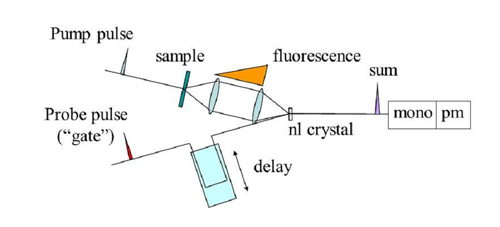
| Auteur | Titre | Année | Journal/Procédures | Reftype | DOI/URL |
|---|---|---|---|---|---|
| Auguste, T., Gobert, O. & Carre, B. | Numerical study on high-order harmonic generation by a Bessel-Gauss laser beam | 2008 |
PHYSICAL REVIEW A Vol. 78(3), pp. 033411 |
article | DOI |
| Auguste, T., Salieres, P., Wyatt, A.S., Monmayrant, A., Walmsley, I.A., Cormier, E., Zair, A., Holler, M., Guandalini, A., Schapper, F., Biegert, J., Gallmann, L. & Keller, U. | Theoretical and experimental analysis of quantum path interferences in high-order harmonic generation | 2009 |
PHYSICAL REVIEW A Vol. 80(3), pp. 033817 |
article | DOI |
| Bom, L.B.E., Haessler, S., Gobert, O., Perdrix, M., Lepetit, F., Hergott, J.-F., Carre, B., Ozaki, T. & Salieres, P. | Attosecond emission from chromium plasma | 2011 |
OPTICS EXPRESS Vol. 19(4), pp. 3677-3685 |
article | |
| Bourassin-Bouchet, C., Diveki, Z., de Rossi, S., English, E., Meltchakov, E., Gobert, O., Guenot, D., Carre, B., Delmotte, F., Salieres, P. & Ruchon, T. | Control of the attosecond synchronization of XUV radiation with phase-optimized mirrors | 2011 |
OPTICS EXPRESS Vol. 19(4), pp. 3809-3817 |
article | |
| Boutu, W., Haessler, S., Merdji, H., Breger, P., Waters, G., Stankiewicz, M., Frasinski, L.J., Taieb, R., Caillat, J., Maquet, A., Monchicourt, P., Carre, B. & Salieres, P. | Coherent control of attosecond emission from aligned molecules | 2008 |
NATURE PHYSICS Vol. 4(7), pp. 545-549 |
article | DOI |
| Caillat, J., Maquet, A., Haessler, S., Fabre, B., Ruchon, T., Salieres, P., Mairesse, Y. & Taieb, R. | Attosecond Resolved Electron Release in Two-Color Near-Threshold Photoionization of N-2 | 2011 |
PHYSICAL REVIEW LETTERS Vol. 106(9), pp. 093002 |
article | DOI |
| Chubar, O., Couprie, M.-E., Labat, M., Lambert, G., Polack, F. & Tcherbakoff, O. | Time-dependent FEL wavefront propagation calculations: Fourier optics approach | 2008 |
Nuclear Instruments and Methods in Physics Research A Vol. 593, pp. 30-34 |
article | DOI |
| Cormier, E., Zair, A., Holler, M., Schapper, F., Keller, U., Wyatt, A., Monmayrant, A., Walmsley, I., Auguste, T. & Salieres, P. | Direct observation of quantum-path interferences in high order harmonic generation | 2009 |
EUROPEAN PHYSICAL JOURNAL-SPECIAL TOPICS Vol. 175, pp. 191-194 |
article | DOI |
| Cornaggia, C. | Enhancements of rescattered electron yields in above-threshold ionization of molecules | 2010 |
PHYSICAL REVIEW A Vol. 82(5), pp. 053410 |
article | DOI |
| Cornaggia, C. | Electron-ion elastic scattering in molecules probed by laser-induced ionization | 2009 |
JOURNAL OF PHYSICS B-ATOMIC MOLECULAR AND OPTICAL PHYSICS Vol. 42(16), pp. 161002 |
article | DOI |
| Cornaggia, C. | Ultrafast Coulomb explosion imaging of molecules | 2009 |
LASER PHYSICS Vol. 19(8), pp. 1660-1670 |
article | DOI |
| Cornaggia, C. | Molecular rescattering signature in above-threshold ionization | 2008 |
PHYSICAL REVIEW A Vol. 78(4), pp. 041401 |
article | DOI |
| Cryan, J.P., Glownia, J.M., Andreasson, J., Belkacem, A., Berrah, N., Blaga, C.I., Bostedt, C., Bozek, J., Buth, C., DiMauro, L.F., Fang, L., Gessner, O., Guehr, M., Hajdu, J., Hertlein, M.P., Hoener, M., Kornilov, O., Marangos, J.P., March, A.M., McFarland, B.K., Merdji, H., Petrovic, V.S., Raman, C., Ray, D., Reis, D., Tarantelli, F., Trigo, M., White, J.L., White, W., Young, L., Bucksbaum, P.H. & Coffee, R.N. | Auger Electron Angular Distribution of Double Core-Hole States in the Molecular Reference Frame | 2010 |
PHYSICAL REVIEW LETTERS Vol. 105(8), pp. 083004 |
article | DOI |
| Dachraoui, H., Auguste, T., Helmstedt, A., Bartz, P., Michelswirth, M., Mueller, N., Pfeiffer, W., Salieres, P. & Heinzmann, U. | Interplay between absorption, dispersion and refraction in high-order harmonic generation | 2009 |
JOURNAL OF PHYSICS B-ATOMIC MOLECULAR AND OPTICAL PHYSICS Vol. 42(17), pp. 175402 |
article | DOI |
| Ding, Y., Huang, Z., Ratner, D., Bucksbaum, P. & Merdji, H. | Generation of attosecond x-ray pulses with a multicycle two-color enhanced self-amplified spontaneous emission scheme | 2009 |
PHYSICAL REVIEW SPECIAL TOPICS-ACCELERATORS AND BEAMS Vol. 12(6), pp. 060703 |
article | DOI |
| Dobosz, S., Stabile, H., Tortora, A., Monot, P., Reau, F., Bougeard, M., Merdji, H., Carre, B., Martin, P., Joyeux, D., Phalippou, D., Delmotte, F., Gautier, J. & Mercier, R. | Internal frequency conversion extreme ultraviolet interferometer using mutual coherence properties of two high-order-harmonic sources | 2009 |
REVIEW OF SCIENTIFIC INSTRUMENTS Vol. 80(11), pp. 113102 |
article | DOI |
| Elkharrat, C., Picard, Y.J., Billaud, P., Cornaggia, C., Garzella, D., Perdrix, M., Houver, J.C., Lucchese, R.R. & Dowek, D. | Ion Pair Formation in Multiphoton Excitation of NO2 Using Linearly and Circularly Polarized Femtosecond Light Pulses: Kinetic Energy Distribution and Fragment Recoil Anisotropy (vol 114A, pg 9902, 2010) | 2010 |
JOURNAL OF PHYSICAL CHEMISTRY A Vol. 114(50), pp. 13288 |
article | DOI |
| Gallmann, L., Holler, M., Zair, A., Schapper, F., Auguste, T., Cormier, E., Wyatt, A., Monmayrant, A., Walmsley, I.A., Salieres, P. & Keller, U. | Quantum Path Interferences in High-Harmonic Generation: Ionization Effects and Spatial Structure | 2009 | 2009 CONFERENCE ON LASERS AND ELECTRO-OPTICS AND QUANTUM ELECTRONICS AND LASER SCIENCE CONFERENCE (CLEO/QELS 2009), VOLS 1-5, pp. 2713-2714 | inproceedings | |
| Gauthier, D., Guizar-Sicairos, M., Ge, X., Boutu, W., Carre, B., Fienup, J.R. & Merdji, H. | Single-shot Femtosecond X-Ray Holography Using Extended References | 2010 |
PHYSICAL REVIEW LETTERS Vol. 105(9), pp. 093901 |
article | DOI |
| Gautier, J., Zeitoun, P., Hauri, C., Morlens, A.S., Rey, G., Valentin, C., Papalarazou, E., Goddet, J.P., Sebban, S., Burgy, F., Mercere, P., Idir, M., Dovillaire, G., Levecq, X., Bucourt, S., Fajardo, M., Merdji, H. & Caumes, J.P. | Optimization of the wave front of high order harmonics | 2008 |
EUROPEAN PHYSICAL JOURNAL D Vol. 48(3), pp. 459-463 |
article | DOI |
| Giannessi, L., Alesini, D., Biagini, M., Boscolo, M., Bougeard, M., Breger, P., Carre, B., Castellano, M., Cianchi, A., Ciocci, F., Chiadroni, E., Clozza, A., Couprie, M.E., Cultrera, L., Dattoli, G., De Silvestri, S., Di Pace, A., Di Pirro, G., Doria, A., Drago, A., Ferrario, M., Filippetto, D., Frassetto, F., Fusco, V., Gallerano, G.P., Gallo, A., Garzella, D., Ghigo, A., Germano, M., Giovenale, E., Labat, M., Lambert, G., Mattioli, M., Merdji, H., Monchicourt, P., Migliorati, M., Musumeci, P., Nisoli, M., Orlandi, G.L., Ottaviani, P.L., Pace, E., Pagnutti, S., Palumbo, L., Petralia, A., Petrarca, M., Poletto, L., Quattromini, M., Reiche, S., Rosenzweig, J.B., Ronsivalle, C., Salieres, P., Sabia, E., Sansone, G., Serafini, L., Spassovsky, I., Spataro, B., Stagira, S., Surrenti, V., Tchebakoff, O., Tomassini, S., Tondello, G., Vaccarezza, C. & Vicario, C. | Seeding experiments at SPARC | 2008 |
NUCLEAR INSTRUMENTS and METHODS IN PHYSICS RESEARCH SECTION A-ACCELERATORS SPECTROMETERS DETECTORS AND ASSOCIATED EQUIPMENT Vol. 593(1-2), pp. 132-136 |
article | DOI |
| Glownia, J.M., Cryan, J., Andreasson, J., Belkacem, A., Berrah, N., Blaga, C.I., Bostedt, C., Bozek, J., DiMauro, L.F., Fang, L., Frisch, J., Gessner, O., Guehr, M., Hajdu, J., Hertlein, M.P., Hoener, M., Huang, G., Kornilov, O., Marangos, J.P., March, A.M., McFarland, B.K., Merdji, H., Petrovic, V.S., Raman, C., Ray, D., Reis, D.A., Trigo, M., White, J.L., White, W., Wilcox, R., Young, L., Coffee, R.N. & Bucksbaum, P.H. | Time-resolved pump-probe experiments at the LCLS | 2010 |
OPTICS EXPRESS Vol. 18(17), pp. 17620-17630 |
article | |
| Glownia, J.M., Cryan, J., Kornilov, O., Hertlein, M., Gessner, O., Belkacem, A., Wilcox, R., Huang, G., White, J., Petrovic, V., Raman, C., Merdji, H., Ray, D., Andreasson, J., Hajdu, J., Frisch, J., White, W., Bostedt, C., Bucksbaum, P.H. & Coffee, R. | Ultrafast X-ray-Pump, Laser-Probe Spectroscopy at LCLS | 2010 | 2010 CONFERENCE ON LASERS AND ELECTRO-OPTICS (CLEO) AND QUANTUM ELECTRONICS AND LASER SCIENCE CONFERENCE (QELS) | inproceedings | |
| Guyétand, O., Gisselbrecht, M., Huetz, A., Agostini, P., Carré, B., Breger, P., Gobert, O., Garzella, D., Hergott, J.-F., Tcherbakoff, O., Merdji, H., Bougeard, M., Rottke, H., Böttcher, M., Ansari, Z., Antoine, P. & DiMauro, L.F. | Complete momentum analysis of multi-photon photo-double ionization of xenon by XUV and infrared photons | 2008 |
Journal of Physics B: Atomic, Molecular and Optical Physics Vol. 41(6), pp. 065601 (11pp) |
article | URL |
| Guyétand, O., Gisselbrecht, M., Huetz, A., Agostini, P., Taïeb, R., Maquet, A., Carré, B., Breger, P., Gobert, O., Garzella, D., Hergott, J.-F., Tcherbakoff, O., Merdji, H., Bougeard, M., Rottke, H., Böttcher, M., Ansari, Z. & Antoine, P. | Evolution of angular distributions in two-colour, few-photon ionization of helium | 2008 |
Journal of Physics B: Atomic, Molecular and Optical Physics Vol. 41(5), pp. 051002 (6pp) |
article | URL |
| Haessler, S., Boutu, W., Merdji, H., Breger, P., Taieb, R., Caillat, J., Maquet, A., Monchicourt, P., Carre, B. & Salieres, P. | Measuring the complex recombination dipole of aligned CO2 molecules in high-order harmonic generation | 2008 | UVX 2008: 9TH CONFERENCE OF COHERENT AND INCOHERENT SOURCES UV, VUV AND X; APPLICATIONS AND RECENT DEVELOPMENTS, pp. 65-70 | inproceedings | |
| Haessler, S., Boutu, W., Stankiewicz, M., Frasinski, L.J., Weber, S., Caillat, J., Taieb, R., Maquet, A., Breger, P., Monchicourt, P., Carre, B. & Salieres, P. | Attosecond chirp-encoded dynamics of light nuclei | 2009 |
JOURNAL OF PHYSICS B-ATOMIC MOLECULAR AND OPTICAL PHYSICS Vol. 42(13), pp. 134002 |
article | DOI |
| Haessler, S., Caillat, J., Boutu, W., Giovanetti-Teixeira, C., Ruchon, T., Auguste, T., Diveki, Z., Breger, P., Maquet, A., Carre, B., Taieb, R. & Salieres, P. | Attosecond imaging of molecular electronic wavepackets | 2010 |
NATURE PHYSICS Vol. 6(3), pp. 200-206 |
article | DOI |
| Haessler, S., Diveki, Z., Boutu, W., Breger, P., Stankiewicz, M., Frasinski, L.J., Taieb, R., Caillat, J., Maquet, A., Ruchon, T., Carre, B. & Salieres, P. | Imaging Molecular Orbitals using HHG | 2009 | 2009 LASERS and ELECTRO-OPTICS and THE PACIFIC RIM CONFERENCE ON LASERS AND ELECTRO-OPTICS, VOLS 1 AND 2, pp. 1163 | inproceedings | |
| Haessler, S., Fabre, B., Higuet, J., Caillat, J., Ruchon, T., Breger, P., Carre, B., Constant, E., Maquet, A., Mevel, E., Salieres, P., Taieb, R. & Mairesse, Y. | Phase-resolved attosecond near-threshold photoionization of molecular nitrogen | 2009 |
PHYSICAL REVIEW A Vol. 80(1), pp. 011404 |
article | DOI |
| Holler, M., Zair, A., Schapper, F., Auguste, T., Cormier, E., Wyatt, A., Monmayrant, A., Walmsley, I.A., Gallmann, L., Salieres, P. & Keller, U. | Ionization effects on spectral signatures of quantum-path interference in high-harmonic generation | 2009 |
OPTICS EXPRESS Vol. 17(7), pp. 5716-5722 |
article | |
| Kirm, M., Babin, V., Feldbach, E., Guizard, S., De Grazia, M., Nagirnyi, V., Vasil'ev, A. & Vielhauer, S. | Behaviour of scintillators under XUV free electron laser radiation | 2008 |
Journal of Luminescence Vol. 128(5-6)Proceedings of the 16th International Conference on Dynamical Processes in Excited States of Solids, 16th International Conference on Dynamical Processes in Excited States of Solids, pp. 732-734 |
article | URL |
| Kirm, M., Nagirnyi, V., Feldbach, E., De Grazia, M., Carre, B., Merdji, H., Guizard, S., Geoffroy, G., Gaudin, J., Fedorov, N., Martin, P., Vasil'ev, A. & Belsky, A. | Exciton-exciton interactions in CdWO4 irradiated by intense femtosecond vacuum ultraviolet pulses | 2009 |
PHYSICAL REVIEW B Vol. 79(23), pp. 233103 |
article | DOI |
| Klinger, D., Sobierajski, R., Nietubyc, R., Krzywinski, J., Pelka, J., Juha, L., Jurek, M., Zymierska, D., Guizard, S. & Merdji, H. | Surface modification of polymethylmethacrylate irradiated with 60 fs single laser pulses | 2009 |
RADIATION PHYSICS AND CHEMISTRY Vol. 78(Suppl. 10), pp. S71-S74 |
article | DOI |
| Labat, M., Bruni, C., Lambert, G., Hosaka, M., Shimada, M., Katoh, M., Mochihashi, A., Takashima, Y., Hara, T. & Couprie, M.-E. | Local heating induced by Coherent Harmonic Generation on electron beam dynamics in storage ring | 2008 |
EPL Vol. 81(3), pp. 34004 |
article | DOI |
| Labat, M., Lambert, G., Couprie, M., Shimada, M., Katoh, M., Hosaka, M., Takashima, Y., Hara, T. & Mochihashi, A. | Coherent Harmonic Generation experiments on UVSOR-II storage ring | 2008 |
Nuclear Instruments and Methods in Physics Research Section A: Accelerators, Spectrometers, Detectors and Associated Equipment Vol. 593(1–2), pp. 1 - 5 |
article | DOI URL |
| Labat, M., Tcherbakoff, O., Lambert, G., Garzella, D., Carre, B. & Couprie, M.E. | Test of HHG chambers for seeding at SPARC | 2008 |
NUCLEAR INSTRUMENTS and METHODS IN PHYSICS RESEARCH SECTION A-ACCELERATORS SPECTROMETERS DETECTORS AND ASSOCIATED EQUIPMENT Vol. 593(1-2), pp. 26-29 |
article | DOI |
| Lambert, G., Hara, T., Garzella, D., Tanikawa, T., Labat, M., Carre, B., Kitamura, H., Shintake, T., Bougeard, M., Inoue, S., Tanaka, Y., Salieres, P., Merdji, H., Chubar, O., Gobert, O., Tahara, K. & Couprie, M.E. | Injection of harmonics generated in gas in a free-electron laser providing intense and coherent extreme-ultraviolet light | 2008 |
NATURE PHYSICS Vol. 4(4), pp. 296-300 |
article | DOI |
| Lambert, G., Hara, T., Labat, M., Tanikawa, T., Tanaka, Y., Yabashi, M., Garzella, D., Carre, B. & Couprie, M.E. | Seed level requirement for improving the temporal coherence of a Free-Electron Laser | 2009 |
EPL Vol. 88(5), pp. 54002 |
article | DOI |
| Lambert, G., Hara, T., Tanikawa, T., Garzella, D., Carre, B., Ishikawa, T., Kitamura, H., Shintake, T., Tahara, K., Tanaka, Y., Yabashi, M., Bougeard, M., Labat, M., Merdji, H., Salieres, P., Gobert, O., Chubar, O. & Couprie, M.E. | The SCSS test accelerator Free-Electron Laser seeded by harmonics produced in gas | 2008 | UVX 2008: 9TH CONFERENCE OF COHERENT AND INCOHERENT SOURCES UV, VUV AND X; APPLICATIONS AND RECENT DEVELOPMENTS, pp. 85-91 | inproceedings | |
| Mairesse, Y., Boutu, W., Breger, P., Constant, E., Descamps, D., Dudovich, N., Fabre, B., Haessler, S., Higuet, J., Mevel, E., Petit, S., Salieres, P., Villeneuve, D.M. & Corkum, P.B. | High-contrast pump-probe spectroscopy with high-order harmonics | 2008 | UVX 2008: 9TH CONFERENCE OF COHERENT AND INCOHERENT SOURCES UV, VUV AND X; APPLICATIONS AND RECENT DEVELOPMENTS, pp. 107-111 | inproceedings | |
| Mairesse, Y., Haessler, S., Fabre, B., Higuet, J., Boutu, W., Breger, P., Constant, E., Descamps, D., Mével, E., Petit, S. & Salières, P. | Polarization-resolved pump-probe spectroscopy with high harmonics | 2008 |
New Journal of Physics Vol. 10(2), pp. 025028 (11pp) |
article | URL |
| Mauritsson, J., Johnsson, P., Mansten, E., Swoboda, M., Ruchon, T., L'Huillier, A. & Schafer, K.J. | Coherent Electron Scattering Captured by an Attosecond Quantum Stroboscope | 2008 |
Physical Review Letters Vol. 100(7), pp. 073003 |
article | DOI URL |
| Mevel, E., Mairesse, Y., Haessler, S., Fabre, B., Higuet, J., Bouti, W., Breger, P., Constant, E., Descamps, D., Petit, S., Shafir, D., Delcon, H., Dudovich, N. & Salieres, P. | Polarization-Resolved Pump-Probe Spectroscopy with High Order Harmonics | 2009 |
Vol. 92ULTRAFAST PHENOMENA XVI, pp. 24-26 |
inproceedings | |
| Moulet, A., Grabielle, S., Cornaggia, C., Forget, N. & Oksenhendler, T. | Single-shot, high-dynamic-range measurement of sub-15 fs pulses by self-referenced spectral interferometry | 2010 |
OPTICS LETTERS Vol. 35(22), pp. 3856-3858 |
article | |
| Ozaki, T., Bom, L.B.E., Abdul-Hadi, J., Ganeev, R.A., Haessler, S. & Salieres, P. | High-Intensity High-order Harmonics Generated from Low-Density Plasma | 2009 |
Vol. 1153LASER-DRIVEN RELATIVISTIC PLASMAS APPLIED TO SCIENCE, INDUSTRY AND MEDICINE, pp. 254-262 |
inproceedings | |
| Peters, M., Nguyen-Dang, T.T., Cornaggia, C., Saugout, S., Charron, E., Keller, A. & Atabek, O. | Ultrafast molecular imaging by laser-induced electron diffraction | 2011 |
PHYSICAL REVIEW A Vol. 83(5), pp. 051403 |
article | DOI |
| Ravasio, A., Gauthier, D., Maia, F.R.N.C., Billon, M., Caumes, J.-P., Garzella, D., Geleoc, M., Gobert, O., Hergott, J.-F., Pena, A.-M., Perez, H., Carre, B., Bourhis, E., Gierak, J., Madouri, A., Mailly, D., Schiedt, B., Fajardo, M., Gautier, J., Zeitoun, P., Bucksbaum, P.H., Hajdu, J. & Merdji, H. | Single-Shot Diffractive Imaging with a Table-Top Femtosecond Soft X-Ray Laser-Harmonics Source | 2009 |
PHYSICAL REVIEW LETTERS Vol. 103(2), pp. 028104 |
article | DOI |
| Rottke, H., Guyetand, O., Gisselbrecht, M., Huetz, A., Agostini, P., Carre, B., Breger, P., Gobert, O., Garzella, D., Hergott, J.-F., Tcherbakoff, O., Merdji, H., Bougeard, M., Boettcher, M., Zhavoronkov, N., Ansari, Z., Sandner, W., Antoine, P. & DiMauro, L.F. | Photoionization in combined ultra short XUV and infrared laser pulses - art. no. 012015 | 2009 |
Vol. 141INTERNATIONAL CONFERENCE ON MANY PARTICLE SPECTROSCOPY OF ATOMS, MOLECULES, CLUSTERS AND SURFACES, pp. 12015 |
inproceedings | |
| Ruchon, T., Hauri, C.P., Varjú, K., Mansten, E., Swoboda, M., López-Martens, R. & L'Huillier, A. | Macroscopic effects in attosecond pulse generation | 2008 |
New Journal of Physics Vol. 10(2), pp. 025027 (10pp) |
article | URL |
| Saugout, S., Charron, E. & Cornaggia, C. | H-2 double ionization with few-cycle laser pulses | 2008 |
PHYSICAL REVIEW A Vol. 77(2), pp. 023404 |
article | DOI |
| Schapper, F., Holler, M., Auguste, T., Zair, A., Weger, M., Salieres, P., Gallmann, L. & Keller, U. | Spatial fingerprint of quantum path interferences in high order harmonic generation | 2010 |
OPTICS EXPRESS Vol. 18(3), pp. 2987-2994 |
article | |
| Taieb, R., Maquet, A. & Meyer, M. | Two-color photoionization in XUV-FEL and laser fields | 2008 |
Vol. 141Journal of Physics: Conference Series, pp. 012017 (6 pp.) |
article | |
| van Tilborg, J., Allison, T.K., Wright, T.W., Hertlein, M.P., Falcone, R.W., Liu, Y., Merdji, H. & Belkacem, A. | Femtosecond isomerization dynamics in the ethylene cation measured in an EUV-pump NIR-probe configuration | 2009 |
JOURNAL OF PHYSICS B-ATOMIC MOLECULAR AND OPTICAL PHYSICS Vol. 42(8), pp. 081002 |
article | DOI |
| van Tilborg, J., Allison, T.K., Wright, T.W., Hertlein, M.P., Liu, Y., Merdji, H., Falcone, R.W. & Belkacem, A. | EUV-driven femtosecond dynamics in ethylene | 2009 |
Vol. 194XXVI INTERNATIONAL CONFERENCE ON PHOTONIC, ELECTRONIC AND ATOMIC COLLISIONS, pp. 012015 |
inproceedings | DOI |
| Zair, A., Holler, M., Guandalini, A., Schapper, F., Biegert, J., Gallmann, L., Keller, U., Wyatt, A.S., Monmayrant, A., Walmsley, I.A., Cormier, E., Auguste, T., Caumes, J.P. & Salières, P. | Quantum Path Interferences in High-Order Harmonic Generation | 2008 |
Physical Review Letters Vol. 100(14), pp. 143902 |
article | DOI URL |
| Zair, A., Holler, M., Schapper, F., Gallmann, L., Wyatt, A., Monmayrant, A., Auguste, T., Pascal-Caumes, J., Walmsley, I., Cormier, E., Salieres, P. & Keller, U. | Study of quantum-path interferences in the high harmonic generation process. | 2009 |
Vol. 92ULTRAFAST PHENOMENA XVI, pp. 27-29 |
inproceedings |
Our researches in Solid State NMR aim at developping new experimental, theoretical and computational approaches for the study of materials. They are conducted along four main directions :
|
Bromine is a poorly known element in Earth Sciences, more especially in the deep crust and mantle. Whereas this element is not concentrated in natural rocks, Br is an efficient ozone killer and has been found to be released to the atmosphere through volcanism. In order to constrain the Br geodynamical cycle of the Earth, we have experimentally monitored Br degassing and Br recycling through the subduction factory. |
The transformation of solar energy into chemical energy stored in the form of hydrogen, through photoelectrochemical water splitting is a promising method with the important advantage of being environment friendly and free from carbon dioxide emission. Several metal oxide semiconductors are able to split water into hydrogen and oxygen but the efficiencies are still low. Several strategies were proposed to improve the photoelectrochemical properties like doping or nanostucturing, but the origin of the improvement is not well understood yet. In the laboratory, we study the photo-electrochemical activity of thin epitaxial oxide films in order to understand the influence of different parameters on the photoanode efficiency.
|
Systèmes vitreux, dynamiques lentes:
-Verres de spin et chiralité
-Violation de FDT
-Modèles phénoménologiques
|
Matière active :
-
Modélisation d’expériences in vivo
-
Classes d’universalité
-
Interactions non décomposables en paires
-
Equations continues
-
Nouveaux modèles
-
Renormalisation non perturbative
-
Criticalité auto-organisée
-
Voisinages non métriques
Matière granulaire :
- Interaction particules-fluide en rotation.
- Méca. Stat. des systèmes granulaires en tambour et écoulement cisaillé
Measurements of very weak field (down to the femtotesla range) have been mainly addressed by low-Tc SQUIDS. We have proposed in 2004 the principle of a new sensor, based on spin-electronics, to offer extremely good sensitivity for measurements of magnetic fields over a wide range of frequency (dc to hundreds of MHz).
These sensors, called mixed sensors, are based on the association of a sensitive field sensor (Giant Magnetoresistance or Tunnel Magnetoresistance) and of an efficient flux-to-field transformer. The transformer is a cm size superconducting loop containg a micron size constriction. When an external field is applied perpendicular to the loop, a supercurrent is generated, to prevent the entrance of the field in the loop. This supercurrent reaches a very high density when passing through the constriction. The stray field lines due to this current can be locally hundreds to thousands times larger than the applied field. If one locates a GMR or TMR element on top or below the constriction, it will collect this locally enhanced field lines and a change in the resistance of the GMR (TMR) element can be measured (see Figure 1).
This device is fully made out of thin film technology, and can be either using a low-Tc (typically Nb) loop or a High-Tc (YBaCuO) loop. In the first case, liquid helium cooling is required whereas in the second one only nitrogen cooling is necessary.
L’immense complexité du vivant a pu faire croire que les méthodes de la physique ne pouvaient être utiles pour le comprendre. Avec le recul, il est apparu que cette difficulté était due au fait que les systèmes biologiques évoluent dans un univers impliquant un très grand nombre d’états d’énergies voisines et séparés par des barrières peu élevées : une faible contrainte imposée peut entrainer un déplacement considérables des équilibres.
Un problème typique est le repliement des protéines. Le paradoxe de Levinthal résulte simplement du dénombrement des configurations géométriques possibles d’une protéine moyenne, de l’ordre de 10 ^ 143 ! Il est donc impossible qu’elle explore toutes les configurations pour trouver la plus stable. Il est également possible qu’il existe plusieurs états métastables. In vivo, une mauvaise configuration de certaines protéines est considérée comme la cause de pathologies graves (ESB, Creutzfeld-Jacobs, Alzheimer).
Nous avons étudié une facette de ce problème en considérant un système "modèle" i.e. considérablement simplifié : un peptide composé de la répétition d’un seul acide aminé, l’acide polyglutamique. Cet homopeptide est connu pour sa propension à constituer une hélice à basse température et une chaîne aléatoire à température élevée. L’état hélicoïdal peut être facilement quantifié expérimentalement par la technique de dichroïsme circulaire. Cette transition a été modélisée dès 1959 par une théorie mettant en jeu deux paramètres énergétiques, l’énergie d’une boucle élémentaire et l’énergie de couplage entre boucles voisines ainsi que l’entropie des configurations. Ce modèle est formellement analogue au modèle d’Ising à une dimension et donc soluble. Des mesures récentes précises se sont révélées incompatibles avec ce modèle. Nous avons pu montrer que par contre les données étaient bien décrites par la considération d’un troisième état possible et l’absence de coopérativité.
Ce projet vise à accroitre la compréhension du phénomène d’électrogreffage localisé qui apparaît dans le cas d’électrodes fortement polarisées approchant un substrat. En effet, les conditions particulières qui doivent être réunies pour observer un électrogreffage localisé de monomères vinyliques peuvent être qualifiées d’extrêmes en comparaison de celles qui sont généralement utilisées en électrochimie. Ainsi, la présence simultanée de grandes densités de courant et de forts potentiels électriques génère des bulles à proximité de l’électrode, conduisant à un phénomène de turbulence ainsi qu’à l’apparition transitoire de couches isolantes à l’interface électrode-solution. De plus, il a été observé que le potentiel électrique local, de même que le contenu chimique de la solution à proximité de l’électrode, jouaient un rôle dans la transformation de la surface.
En alliant travaux théoriques et expérimentaux, et en commençant par l’étude de situations simples pour augmenter la complexité de façon graduelle, nous proposons de construire un modèle théorique réaliste pour l’électrogreffage localisé par SECM sous haute tension, permettant de mettre en évidence la contribution individuelle de chacun des phénomènes et des paramètres qui leurs sont associés.
Contact : Renaud CORNUT












